|
4/8/2024 The Page that was MissedResearch for our latest blog post involved searching the 1855 Massachusetts census for all Acton residents who were born in Ireland. Using one of the available online indices, a list could be generated quickly, and then linked images of the census forms allowed us to check each individual’s details and make sure that we had not missed anyone in town born in Ireland. Aside from some creative name-spelling and questions about ages, we thought we had a complete list of Acton’s 1855 Irish-born population. We should have known that the process was too simple.
A few years ago, the Society received a donation of a book containing a handwritten “Census of Acton taken June 1st 1855 by Samuel Hosmer, Agent for Selectmen & Assessors.” This 1855 census listing was entirely handwritten, not a set of filled-in census forms. Because we have easy online access to census images through genealogical websites, it had never seemed important to study our census book in detail. While working on the Irish data, however, we took a look at what was actually in the book. To our surprise, on the first page, in the first household, there was a young Irish woman who was not included in our list of Irish-born residents. Thinking that it was perhaps an indexing problem with the spelling of an Irish name, we tried searching the online 1855 census database for the Massachusetts-born individuals in the same household. They were also missing. Moving down the handwritten page, we found that none of the people listed by Samuel Hosmer in the first 6 Acton households, plus part of the seventh, was included in the online index. Three commonly-used online databases gave us the same result; none of them included people from the first 6+ households in our handwritten 1855 census book. The first person who appeared both on our book’s first page and in Ancestry’s 1855 census database was Emma Francis [sic] Estabrooks, age 1 year, 11 months. The online image of the census form showed that Emma was listed on the first line of a filled-in, preprinted Acton census form. There should have been a previous form that listed her parents, but when we tried to access the previous page, we found that there was no image other than the cover of a bound volume Census of Massachusetts 1855, Vol. 19, Middlesex Co., Acton to Cambridge. We had the same result using FamilySearch and another online database; presumably, they all used the same source. (Though stated sources and dates vary somewhat across the different databases, they seem to have come originally from microform/microfilm of the census held at the Massachusetts State Archives.) It appears either that the original filming missed the form that contained the first 6.5 households in Acton’s enumeration or that the first form was actually lost. Either way, the indices and digital images of Acton’s 1855 census that are being used regularly for research are missing 36 Acton residents. We offer here the missing page 1 of Acton’s 1855 census for everyone who is searching for the following 36 individuals. Some were life-long Acton residents, but others only seem to appear in Acton’s census records here. All listed individuals were born in Massachusetts, except as noted. Seven of the missed individuals were born in Ireland. (We included them in our blog post on Irish in 1850s Acton.) Samuel Hosmer’s 1855 Census of Acton: Dwelling & Household 1
Note that the name Weatherbee was more often spelled Wetherbee in Acton. The name Esterbrook(s)/Estabrook(s) is differently spelled even within the same family here and appears in different forms in various Acton records. Further research did not help us to confirm the Irish name Colorne and what other forms it might have taken. Records for other individuals in the 1850s yielded other possible names such as Coborne and Coline. 3/17/2024 Irish in 1850s Acton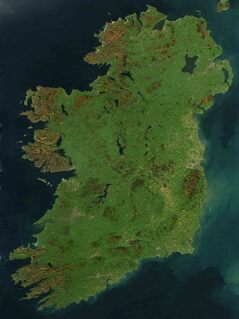 Source: NASA Earth Observatory Source: NASA Earth Observatory In honor of St. Patrick’s Day, we explored Irish immigration into Acton. The most useful starting point was the 1850 federal and 1855 Massachusetts censuses. Earlier censuses only listed the name of the head of households, usually male. The 1850s listings give us the name of every person in town, as well as their (sometimes approximate) age and birthplace. The population during the 1850s reflects changes in Acton caused both by Irish Famine immigration and the arrival of the railroad. The 1850 census of Acton listed 107 people born in Ireland, or 6.7% of the total population of 1,605. Twenty-five of the Irish-born individuals in Acton were female. (A clear error in the household of Ebenezer Davis Jr. was corrected in our statistics; research showed that the birthplace of Ellen Grimes and Charles Robbins was switched.). The 1850 Acton census gave no occupation for any female, so we can only guess what they were doing. Some women were living with a male who was probably the husband, sometimes with children. In other cases, females lived in a household of a seemingly unrelated family. They probably were doing domestic work. Of the 82 males born in Ireland, almost all who were of working age were laborers (71). Thirty-one were living on a farm and probably working there. Not one of the Irish laborers was listed as a farmer, a term that in the 1850 census apparently was reserved for those whose farm produced more than $100 of products. However, three of the Irish-born men owned real estate that included improved land and buildings. The town’s tax valuation for 1850 shows that John Grimes had 2 acres of improved land, Francis Kinsley had 1.5 acres, and Thomas Kinsley (listed in the 1850 census as Thomas “Wamsley”) had 3 acres. None showed up on the agricultural census for that year. Only three Irish-born men had occupations other than laborer. Twenty-six-year old Nathan Smith was working as a blacksmith for Jonas Blodget. Michael Phaelan was working as a “Switchman” for the railroad, an employer that provided opportunities to many Irish in the nineteenth century. It is very likely that some (or many) of the men listed as laborers worked for the railroad. Finally, Jerry McCarthy was listed as a Boarding House Keeper. Along with (presumably wife) Catherine and two children, he provided a home to eleven Irish laborers. In the 1855 Acton census, there were 111 Irish-born individuals out of a total population of 1,680. The Irish population percentage had not changed much, but the gender mix did. Forty-four were female (39.6% of the Irish-born population, up from 23.3% in 1850). Again, females’ occupations were not noted. Of the 67 Irish men of working age, 27 were listed as “farmer,” a term that seems to have been used in 1855 for anyone working on a farm. (Land ownership was not specified in this state census, although it can be discovered from other sources.) Two Irish-born men were listed simply as “laborer.” The 1855 census specified that 27 men were working on the railroad, almost all as “repairer,” although Michael Phelan was working as a “Switch Tender.” There were eight Irish-born men who had other occupations. Daniel McCarthy was working as a tailor. John Caully (name has possible interpretations such as Canly or Carelly) and Morris Sexton were apparently working at the flannel print works as a “flannel printer” and a ”dyer,” respectively. Michael Falan and Martin Fay were Wood Sawyers, and Thomas Kinsley was a Stone Layer. One has to wonder how the early Irish immigrants were received in Acton. Comparing the 1850 and the 1855 census lists, we found that many people from the earlier list had moved on by 1855. Given significant variations in ages and sometimes in names, it is impossible to match the two lists precisely, but the maximum number that we conjecture might possibly have been on both lists is 23 people. Whether that reflected the climate of the town or simply other opportunities elsewhere, we cannot tell. There may have been a variety of responses to the new arrivals. We do not have a local newspaper available until later, so surviving newspaper reports that were repeated in other places were likely to feature the worst. One such story that circulated in September 1849 accused Acton’s selectmen of shockingly uncharitable treatment of a family of Irish immigrants in crisis. After the story appeared in Boston papers and was picked up in others, Boston’s Daily Evening Transcript reported on an inquiry into the matter and clarified that the tragedy had actually happened in a different town and had not involved Acton’s selectmen at all. (The downside of our having access to digitized old newspapers is that we also have access to old rumors and reporting errors.) Whatever the welcome they received, Acton’s Irish residents proceeded with their lives after the huge upheaval of immigrating. Between 1848 and 1855, 37 children were born in Acton to Irish-born parents. Some Irish-born Acton residents had enough to show up in an 1855 Acton agricultural valuation:
Sources:
1850 Federal Census of Acton (online) 1855 Massachusetts Census of Acton (online) Census of Acton taken June 1st 1855 by Samuel Hosmer, Agent for Selectmen & Assessors (handwritten) Vital Records of Acton, MA Newspaper articles not actually describing an Acton event: Boston Courier, Sept. 13, 1849, p. 4 Boston Evening Transcript, Sept. 13, 1849, p. 1 The (Springfield) Daily Republican, Sept. 13, 1849, p 2 Boston Daily Evening Transcript, Sept. 20, 1849, p. 2 Salem Gazette, Sept. 21, 1821, p. 2 (quoting Boston Atlas) The (Gettysburg, PA) Star and Banner, Sept. 28, 1849, p. 5 Picture of Ireland courtesy of NASA Earth Observatory, image 49687 10/23/2023 East Acton’s Wandering SchoolhousesPreparing for the Society’s latest exhibit on the history of Acton’s schools has led to a flurry of research into some of the lesser-documented schoolhouses in town. East Acton’s schools have been surprisingly challenging to pin down. East Acton was not consistently treated as a distinct school district. Its schoolhouses were used for a relatively short time and then sold off for other purposes, sometimes to be moved down the street or even out of town. In addition, some of our most helpful sources on school history were written by people from other parts of the town; East Acton school information has proved harder to verify. In Acton’s earliest years as a town, individuals were paid to keep a school, presumably in their own house or sometimes in a privately-built schoolhouse. During the 1740s-1760s, the town was divided into a varying number of school districts - first three, then six, then five, then six again. In 1771, the town decided to build (or buy) schoolhouses. One of the existing schoolhouses was on today’s Strawberry Hill Road, perhaps at about today’s #13. (Though that location has been suggested on a historical map from about 1890, so far, no early deed or map has been found to pinpoint the exact location. We only know that it was “near Solomon Burgess” who lived on the north side of Strawberry Hill Road past its intersection with today’s Esterbrook Road.) A vote in May 1795 affirmed (briefly) that this school was going to stay in service, although town meetings’ frequent reconsidering of school locations complicates the job of understanding school history. In the late 1790s, there was also a schoolhouse standing somewhere near the corner of Main Street and Harris St. that would have served North Acton. In November 1800, the town voted to pay Daniel Davis for building a new school at the corner of Great Road and what is now Davis Road. Unlike many reconsidered decisions, this vote apparently led to actual building, because in December 1800 the town debated how they would use the newly built schoolhouse. The issue was whether they would send students from the East and North districts to the new school on Great Road or keep the students in separate districts. They voted to combine the North and East school districts into the new schoolhouse and sell off the old schoolhouse on Strawberry Hill Road and the one around today’s Harris St. The schoolhouses were both sold to David Barnard in Dec. 1800; their eventual fate is unknown. According to an 1849 school report, the 1800 combined schoolhouse was square, four-roofed and one-storied, similar to one that had been built in the town center, also by Captain Daniel Davis. The schoolhouses were painted red with white window trim and Spanish brown roofs in about 1803 (but not before a reconsidering vote on the roof color). The combined school district was not universally favored. The idea of splitting it up again was debated and dismissed in 1803 and 1818. In 1820, John White Jr. and others offered to raise the money independently to pay for a schoolhouse in their part of the district. Evidently that did not pan out, because in 1824, the town again was asked to split the district and elected a committee to look into the matter. In May 1826, the town voted to to purchase land and build two new brick school houses in the “east part of Acton.” Shortly thereafter, they reconsidered their decision. Bricks had been bought already and were given to the Selectmen to dispose of. (This required discussion at two additional town meetings and a second vote in 1827.) The debates continued. In 1832, John White and others tried to opt out of the combined district; that option was also dismissed. So many reconsiderations happened that it is tricky to understand exactly when the issue was finally resolved. In May 1839, the town agreed to make North and East Acton separate districts and to furnish them with brick schoolhouses. The old schoolhouse was to be sold. The North School seems to have been built promptly. Perhaps with too much optimism, it was decided that the East school would be built after agreement was reached on where to site it. There has been quite a bit of confusion among local historians about this school, certainly understandable given the town’s voting record. Some seem to have decided that the brick schoolhouse was never built in East Acton (including Phalen, author of a town history), but that idea is refuted by later records. In April 1841, the task of finding land for the East Schoolhouse was delegated to the selectmen. Although the warrant for the May 1841 meeting asked the town to reconsider that vote, the “decision” at that meeting was to postpone the reconsidering discussion indefinitely. The selectmen seem to have gotten on with the job, because on Sept 20, 1841, William Billings sold the town a piece of land for the new schoolhouse, about 3.5 square rods of land on the north side of the “town road from Acton meeting house to Nathan Brooks” (Strawberry Hill Road) for twenty-five dollars. The site of the brick schoolhouse was shown on four different maps that were drawn up during the school’s period of service. All the maps place the brick schoolhouse on the north side of Strawberry Hill Road, roughly opposite today’s #13. The April 1849 school report describes the new school: In the place of the old house on the great road are built two substantial and convenient brick houses, capable of accommodating fifty scholars each. They have good woodrooms and clothes rooms, and are furnished with black boards and Mitchell’s large map of the world; these last were purchased by subscriptions of the friends of progress in the district. These houses were built at a cost of $525 each, exclusive of the land and its preparation. Sadly, so far, no photograph has been uncovered of the brick East School building. The wooden 1800 schoolhouse eventually migrated up today’s Davis Road and became the second story of an outbuilding on the Ebenezer Davis Jr. farm. A photograph taken by a Davis descendant in the 1890s shows the square schoolhouse installed above a structure with wide doors apparently used for storage. A 1968 picture shows the old schoolhouse above what by then was Wendell Davis’s garage. It is still there today. Acton School Committee reports are available back to the late 1840s. One can learn about the progress and failures of each school and its teachers. They can make enlightening reading. It was customary to hire a female teacher for the spring and summer terms but to hire a male teacher, often a college student trying to supplement his income, during the winter term. The 1860-1861 report informs us that as an experiment, Susan Augusta Davis, who had been a student in the East Acton brick school herself a few years earlier, taught there the entire year. The result: The Winter School was an experiment. It proved a very successful one. The committee believed this school sufficiently civilized and humanized to be well managed by an intelligent female teacher.... We think the work of this teacher day by day, equal to any other in this grade of school ... If we can find such female teachers as Miss D. – and there are many of them – we can have at least one-third more school for the same money heretofore expended for male teachers, some of whom, doubtless, came here mainly to recruit their worn bodies, or fill their empty purses. (School Committee Report 1860-1861, page 21.) It was nice of Miss Davis to teach more hours in the East Acton schoolroom and save the town money. 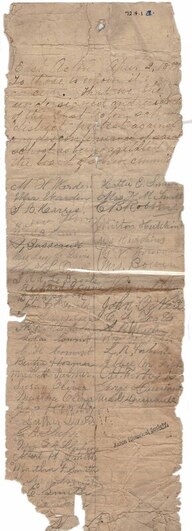 April 1897 Petition April 1897 Petition New Becomes Old Unfortunately, one generation’s “substantial and convenient” building can turn into a later generation’s “smaller” and “inconvenient.” The brick schoolhouse got hard use. As early as 1862, some were advocating for new school buildings in town, but resources were extremely strained by “this grievous war.” No building was done at that time, but the school committee mentioned that “if a change of house is really needed in any district, it is in the East. Their house is more worn, smaller and more inconvenient in proportion to the number of scholars than any other in town.” (1861-1862 School report, page 20) It was not until the 1870-1871 report that a “nice and commodious" schoolhouse had been built. It was a wooden building at about today’s 209 Great Road (around the corner from the Strawberry Hill Road location). The next few years saw wooden schoolhouses also built in the South, West, Center and North districts. The c. 1841 brick schoolhouse was sold in 1870 to Henry Brooks who owned the abutting land. From 1875 and 1889 maps, it appears that he used the building as a paint shop. Ida (Hapgood) Harris, a teacher in the East Acton school in the 1890s, wrote a brief history of the Acton schools. She stated that the East Acton brick schoolhouse had stood on the left side of the road as one was heading away from Great Road, but by the time she was writing in 1937, it was no longer standing. The 1870 wooden schoolhouse was used through Spring 1897. By that time, views of education were changing. Classrooms in which one teacher taught up to eight grades were no longer in favor with educational experts. Apparently, not everyone agreed. It took several years of persuasion by the School Committee and others to make a change. Part of the problem was transportation. Residents from East Acton in June 1896 petitioned to use the funds being spent on the East School to pay for transportation of its students to the Center School. The town refused. This may explain why, in advance of the April 5, 1897 town meeting, a number of East Acton residents signed a protest petition against closing the East Acton school. Whether or not the petition had its intended effect, the Town finally voted to pay to transport the East Acton scholars. The East School was closed and its students were transported to the Center school starting in Fall 1897. (The North school followed in 1899.) The East schoolhouse was sold off. It went to Isaac R. Beharrell, a carpenter and contractor who moved it to West Concord and apparently used it as an office for his business there. We have not yet found out what eventually happened to that East School house. Does it still exist somewhere in West Concord? Was it later torn down? Does anyone have a picture of it during its time in Concord or while it was in East Acton? Please contact us if you can help. Vestiges of East Acton's Schools The Society owns some items related to the East Acton school district in addition to the 1897 petition pictured above. A listing of all students in the "East" district is discussed in a separate blog post. Another document was produced by early-1850s East Acton students, tallying up contributions toward a gift for their teacher Luther Conant, Jr. The Society also owns two large keys, both of which were said by the donors to have unlocked an East Acton schoolhouse. Both had connections to the Henry M. Smith family of Brook Street. A large iron key was donated by the wife of Henry M. Smith’s son Charles; she said that it unlocked an East Acton schoolhouse. A brass key engraved with “Wm. B. Davis” had a tag on it (in Henry’s daughter Martha’s handwriting) stating that “This locked the door of the old brick school house in East Acton.” The brass key was found in Martha Smith’s house at 260 Great Road (torn down decades ago to make way for a shopping center). The tag would seem to be a definitive identification for the brass key, except that consultation with an architect knowledgeable in local history and building practices indicated that the brass key was more consistent with an 1870s door lock, while the larger iron key would be a more logical fit with an 1840s lock. Note that William B. Davis was the school committee member responsible for the East School at the time of transition from the brick to the wooden schoolhouse. He probably had a key to both schools. Both keys seem to have ended up in the Smith family. As mentioned, we have no photographs of the brick East Acton schoolhouse. The Society does own photos that we believe, for numerous reasons, are of the 1870 East Acton schoolhouse. It is in keeping with all of our adventures in the East District that the identification was not simple. The best-identified photo included schoolchildren. The back of the photos says (probably written at least in part by a Society volunteer):
Fall 1889 East Acton School Harris St. Danny Wilson age 9 Effie Wilson Age 6 Gift to the Library by Mrs. Bertha Wilson Joslin, 3 Bow St. Concord, Mass. We are very grateful to Bertha Wilson Joslin for her donation. We believe that it solves our photo identification problems, despite the fact that someone gave the wrong address for the East Acton School. (Harris Street was for some years the site of the North Acton School, never the one in East Acton.) To confirm that the photograph was, in fact, East Acton’s school, we researched the family of Danny, Effie, and Bertha Wilson. They were all children of John Dwight Wilson and Agnes Maria Andrews who came down from Maine (where Danny and Effie were born). John took a job as a prison guard at the Concord Reformatory in 1887. At first, our research made us think that we might never prove where they lived in Acton and where their children would have gone to school. Our late 1880s maps seem to focus on owners, not renters, and we did not find the Wilsons. There is no 1890 census to help. The 1890 town valuation shows that John Wilson was not a property owner; his name was on a list of people who only paid poll tax. Luckily for us, however, another record exists. On August 2, 1889, Agnes Bertha Wilson was born to parents John and Agnes. Unusually, the town clerk that year listed in birth records the section of Acton in which the parents lived, instead of simply writing “Acton.” The Wilsons in August 1889 were indeed living in East Acton, meaning that their children would have attended the East Acton school on Great Road, and we had an identification for the schoolhouse. Finally identifying East School pictures because of Bertha Joslin's donation is a reminder that our ability to answer questions about Acton’s people and history is often dependent upon whether or not someone happens to have donated an item that gives us the clues we need. If other photos of the East Acton school (and other Acton scenes) still exist, having copies in our archives would be a big help to future researchers. Sources Consulted
4/24/2023 Stagecoaches Through ActonOur document collection contains a way bill listing passengers who rode a stagecoach from Boston on Saturday, Dec. 2, 1843. Among the passengers was Mr. Noyes who caught the coach at “Earl House” and headed to Acton. The document is a souvenir of travel just before Acton’s transportation choices changed dramatically. Prior to the arrival of the Fitchburg Railroad in 1844, as Fletcher’s Acton in History tells us, travel to and from Boston “was slow and difficult. The country trader’s merchandise had to be hauled by means of ox or horse-teams from the city. Lines of stage-coaches indeed radiated in all directions from the city for the conveyance of passengers, but so much time was consumed in going and returning by this conveyance that a stop over night was absolutely necessary if any business was to be done. ... a visit to Boston before the era of the railroad was something to be planned as a matter of serious concern. All the internal commerce between city and country necessitated stage-coaches and teams of every description, and on all the main lines of road might be seen long lines of four and eight-horse teams conveying merchandise to and from the city. As a matter of necessity, taverns and hostelries were numerous and generally well patronized.” (p. 268) Coaches required fresh teams of horses at intervals, so stops were usually made every 8-12 miles. Acton had taverns before the stage routes (for example Mark White’s at 274 Great Road and Jones Tavern in South Acton), but as stage travel became more prevalent, taverns and inns multiplied as well. Shattuck’s History of Concord says that the first public stagecoaches came from Boston “into the country through Concord, in 1791, by Messrs. John Vose & Co.” (p. 205) Ads for stages between Boston “and the country north-west thereof” were being advertised in the Columbian Centinel in 1793, leaving from Charlestown and passing through Concord and Groton. Acton was not mentioned specifically, but presumably stages traveled via today’s Great Road, coming from Concord, through East Acton, by Nagog Pond, and on into Littleton. That route was noted as “Littleton Road” on a map drawn by Jabez Brown in 1794 and was also in early days referred to as the Groton Road. Like later decisions about railroad routes, decisions made elsewhere about stage and mail routes would have significant effects on businesses in outlying towns. The Columbian Centinel ran a series of proposals in 1794 that indicated that the mail route from Boston to Keene and other points in New Hampshire had not yet been settled. It would either go through Concord and Lancaster or Concord and Groton. Later, there seem to have been disputes among “interested persons” such as innkeepers about whether there was a significant difference in distance between the Groton-to-Lexington routes via Carlisle or Concord. (Green’s Historical Sketch, p. 193) By June 1810, the Boston Patriot was running ads for competing stage lines that explicitly mentioned Acton. Luther Carlton advertised the Concord, Harvard & Winchendon Stage that left Boston on Wednesdays & Saturdays at 7 a.m., passing through West Cambridge, Lexington, Concord, Acton, Boxborough, Harvard, Shirley, Lunenburg, and Fitchburg. (On Saturdays, it continued on to Ashburnham and Winchendon.) Return trips were on Mondays and Fridays. (June 23, p. 4) Meanwhile, a “new Arrangement of the old Concord and Leominster MAIL STAGE” was leaving Boston on Tuesdays, Thursdays and Saturdays at 5 a.m. going through Cambridge, West Cambridge, Lexington, North Lincoln, Concord, South Acton, Stow, Bolton, Lancaster, Leominster, South Fitchburg, Westminster, Gardner, Templeton, Gerry and Athol. The return stage left Athol at 4 a.m. on Monday, Wednesday and Friday, arriving in Boston in the evening. The latter ad noted that the meal stop was at the Hotel in Concord. (June 2, p. 4) On March 16, 1827, the Boston Traveler advertised that the Boston and Keene Union Stage Company ran a daily stage line leaving Boston at 5 a. m., passing through Lexington, Concord, Acton, Groton, Townsend, Ashby, Rindge (NH), Fitzwilliam (NH), Troy (NH), and Keene (NH), arriving at 5 p.m. in Charlestown (NH). Connections from Keene and Charlestown allowed travelers to continue on to points in Vermont, New Hampshire, and Saratoga Springs. “The Company have been to great expense in purchasing the best of horses and carriages and employing the most careful and obliging drivers, and have spared no pains in establishing the line that it shall not be exceeded by any other from Boston for dispatch and convenience of passengers. They have fourteen changes of teams between Boston and Charlestown, giving only about eight miles for each set of horses.” (p. 3) Stage coach stops such as those advertised by the Union Stage Company encouraged the growth of taverns and inns. Fletcher tells us that “in the east part of Acton, on the road leading from Boston to Keene, there were no less than four or five houses of public entertainment.” (p. 268) An 1831 map shows “Weatherbee’s” (65 Great Road), “Hatgood’s” (really Hapgood’s at 162 Great Road) and White’s (514 Great Road) taverns along Groton Road. The earlier White’s Tavern had been opened in 1755 and operated for a number of years, but it was not in operation in 1831. Fletcher’s History also notes that additional demand for taverns was from drovers who would accompany livestock to their summering pastures in New Hampshire. Wetherbee’s Tavern was well-known to drovers and drivers of baggage-wagons all the way to Canada. (Fletcher, p. 294) 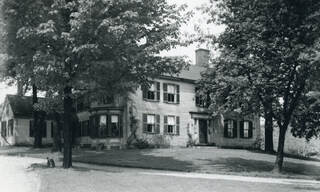 Hosmer Tavern, 471 Mass. Ave., c. 1930s-1940s Hosmer Tavern, 471 Mass. Ave., c. 1930s-1940s Another stage route through Acton followed the Union Turnpike, although as originally surveyed, it had some steep grades farther west that were not popular with stage coach drivers. During the cash-strapped post-Revolutionary War years, the expansion of long-distance roads was often accomplished by for-profit ventures that would involve building a road and then collecting tolls, often at bridges. The Union Turnpike was approved by the Massachusetts Legislature in March 1804 and started operating in 1809. Joel Hosmer of Acton, seeing a business opportunity, enlarged his father’s house at 471 Massachusetts Avenue along the Union Turnpike route to serve as a tavern. (Joel Hosmer appears as one of the names attached to the Union Turnpike Corporation in the legislative act that established it.) The History of Harvard tells us that once Harvard got its own post office around 1811, the Harvard, Lunenburg and Winchendon stage would come with mail and passengers from Concord over the Union Turnpike. Those coaches would stop at a tavern in Harvard (the half-way point) for meals. Hosmer’s Tavern, like the Turnpike itself, was not a profitable venture. The Union Turnpike’s competitor route, the Lancaster and Bolton Turnpike, had easier grades. After the Union Turnpike’s bridge in Harvard was swept away by flooding in 1818, it was not rebuilt. The overly-steep grades were eventually abandoned and what was left of the turnpike in Middlesex County became a public road in 1830. Today, Acton’s Massachusetts Avenue (Route 111) follows the route of the old turnpike. During the 1830s, changes in transportation were happening elsewhere, but coaches kept running through Acton. The Daily Evening Transcript on Sept. 2, 1833 advertised the Lunenburg & Boston Mail Stage, leaving Boston on Tuesdays, Thursdays and Saturdays at 8 a. m., arriving in Lunenburg at 4 p.m., passing through Cambridge, Concord, Acton, Harvard, Still River Village, Shirley Village, and Shirley. One could buy tickets at Brigham’s, 42 Hanover Street, from proprietor William Shepherd. The Bay State Democrat ran an ad on June 3, 1840 for a new line of post coaches to Harvard, MA that would go from 9 Court Street, Boston, via Cambridge, West Cambridge, Lexington, Bedford, Concord, Acton and Boxboro on Tuesdays, Thursdays and Saturdays. The Worcester Palladium advertised on March 31, 1841 proposed (presumably mail) routes, for two-horse coaches. The first was from Concord to Shirley by way of Acton, Boxboro and Harvard, 18 miles in four hours (Tuesday, Thursday and Saturday, to leave at 2 p.m.). The return trip was to leave Shirley on Monday, Wednesday and Friday at 7 a.m. The second route was from Worcester to Lowell, going through Boylston, Berlin, Feltonville, Stow, Acton and Chelmsford. We found no further information on the latter route. In terms of time and place, the ad most relevant to our way bill was found in the March 24, 1843 Boston Traveler. U.S. Mail Coaches would start out from Boston at 10 A. M., leaving from the office at 9 Court Street and 36 Hanover Street on Tuesdays, Thursdays, and Saturdays for Lexington, Concord, Acton, Boxboro, Harvard, Shirley Village and Leominster Village. The return trip was from Harvard at 9 A. M. Mondays, Wednesdays, and Fridays. Our way bill was a Saturday run with 12 passengers (including some children). Mr. Noyes left for Acton from Earl House, listed in the 1842 Boston Almanac as Earl’s Coffee House, operating at 36 Hanover Street. The driver, P. Harrington, may have been Phineas Harrington who, according to Samuel A. Green’s Groton history, had a long career as a stage coach driver in the area. By the time Mr. Noyes took his trip to Acton in Dec. 1843, transportation patterns were changing. Railroads were already providing an alternative to stagecoaches elsewhere. The Fitchburg Railroad was completed to West Acton in the autumn of 1844, and Fletcher says, “that village became a distributing point for the delivery of goods destined for more remote points.” (p. 268) An ad from the Boston Courier on Oct. 28, 1844 tells us that “down trains” to Charlestown would leave West Acton at 7:36 and 10:51 am and around 5 p.m. Trains from Charlestown would leave at 8 a.m. and 1 and 4:30 p.m. After the 8 a.m. train arrived in Acton, stages would leave from there every day except Sunday for “Littleton, Groton, Townsend, Lunenburg, Fitchburg, Ashburnham, Winchendon, Westminster, South Gardner, Templeton, Phillipston, Athol, Mass.; Fitzwilliam, Troy, Swansey, Keene, Walpole, Charlestown, N. H.; Chester, Windsor, Woodstock, Rutland, Middlebury, Royalton, Montpelier, and Burlington, Vt.” There were other stages that only traveled three days per week for points in western Massachusetts, New Hampshire, Vermont, as well as Albany, NY. After the first train arrived in Acton just after 11 a.m., stages would leave for “Stow, Boxboro’, Bolton, Harvard, Lancaster, Leominster and Fitchburg” on Tuesdays, Thursdays, and Saturdays, and for Littleton and Groton on Mondays, Wednesdays and Fridays. As the railroad was extended and lines proliferated, transportation patterns changed rapidly. Both South and West Acton kept growing thanks to the railroad, but Acton was only a stage hub for so many other destinations for a short time. Eventually, stagecoaches became a thing of the past. We are lucky to have in our archives a tangible reminder of those earlier days. Sources:
We are also grateful to the following websites for sharing information and sources on stage routes in other towns (all accessed April 23, 2023): 12/12/2022 Ice Storm Pictures Dated With Diary EntriesWhile we have all heard that “a picture is worth a thousand words,” those of us who deal regularly with unlabeled photographs often wish for just a few words to help us. The Society’s collections include some pictures of an ice storm that hit Acton in November a century ago. Our photographs had different years written on the backs (1921 and 1922), and we were unsure which was correct. Fortunately, diaries can be invaluable for giving first-hand information about events. In this case, Ella Miller’s diary provided the information we needed. She often wrote about the weather and mentioned no ice storm in November 1922. November 1921, however, was a different story. On November 10, 1921, Ella wrote, “Thurs. – Everything covered with ice this morning. Several wires broken in the Centre and limbs broken from trees.” One might have assumed that the November 10 ice storm was the storm in the pictures until one read more from Ella’s 1921 diary: Nov. 28: “Mon. – Ice nearly an inch thick on every twig. Lots of broken wires and limbs strew the common tonight. A small attendance at school and dangerous traveling under trees. A sort of sleet, mist, or rain most of day. No electric lights in town.” Ella's 1921 diary continues: Nov. 29: “Tues. – Still raining and freezing on & trees breaking down. The worst storm of its kind in years. No school. Mr. Edwards came to tell me he couldn’t get through & Mr. Smith turned around here with only five [students]. Pa took Aunt Emma & me down street to see the ruins.” Nov. 30: “Wed. – Sun shining and ice beginning to melt & drop off. More children at school than on Monday. Webster’s weighed one leaf covered with ice – 1 ½ lb. Have begun cleaning up the common.” Dec. 1: “Thurs. - ... Ice nearly off trees. No electric lights since Sun. night – gloomy.” We are very grateful to have photographs of Acton scenes and events at Jenks Library and, sometimes, words to explain them.
7/23/2022 A Birthday Bash with a SurpriseThe Society recently had an open house after a long period of COVID-related closure. The date was chosen for its proximity to Acton’s traditionally-celebrated “birthday,” the anniversary of its formal organization as a town on July 21, 1735. Researching how the town had marked its other birthdays, we came across a scrapbook from Acton's bicentennial celebration in 1935. The more we read, the more we appreciated how ambitious an undertaking it was for a town of 2600 people. 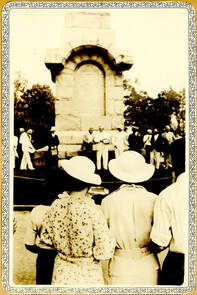 Gov. Curley Reviewing Parade Gov. Curley Reviewing Parade Acton’s 200th birthday was celebrated with a town-wide, three-day extravaganza. The event began at sunrise on July 20th with church bells ringing and a town crier announcing the occasion. The town was also greeted with an “unofficial” cannon salute orchestrated by Nelson Tenney. A Faulkner family reunion took place that day and brought numerous family members to the old homestead in South Acton as well as an impromptu reenactment of the activities there on April 19, 1775. The bicentennial celebration officially kicked off with a parade of military units and “motor floats” starting at 3 p. m., forming near the Faulkner House and heading to West Acton over Central Street. Participants were trucked from there to Acton Center where they were joined by civilian units west of Taylor Road on Main Street. They marched on Main Street through the center, passing the Monument where they were reviewed by dignitaries such as Massachusetts’ governor James M. Curley, ex-mayor of Boston John F. “Honey Fitz” Fitzgerald and other local notables. The parade ended at the Schoolhouse on Meetinghouse Hill. After the parade, there were speeches by the politicians and a rendition of “Sweet Adelaide” sung by John F. Fitzgerald. Florence Piper Tuttle, a poet and Acton native, read “Acton Speaks,” a poem composed for the occasion. After more speeches and a supper provided by one of the women’s clubs (reports varied as to which one), there was a band concert given by an American Legion Post Band from Watertown. On Sunday morning, the churches in town observed the occasion in various ways. The South Acton Universalist church had a memorial service for Lucius Hosmer, a former member who was born on the site of the church. He became a noted composer of his time and had written a piece for the celebration that he had planned to conduct. Unfortunately, he had died unexpectedly earlier in the year. On Sunday afternoon, there were open houses at fifteen of the oldest homes in town, followed by a concert on the Common entirely devoted to the work of Lucius Hosmer. His piece “The Acton Patriots,” composed for the occasion, was one of the pieces. The orchestra was part of the Emergency Relief Administration’s music program. In the evening, there was a community service that involved the pastors of the town’s churches and a 60-person community chorus under the direction of Harold Merriam. On Monday July 22, librarian and artist Arthur F. Davis led a 50-vehicle automobile tour over the approximate route taken by Capt. Isaac Davis and his Minutemen company to Concord on April 19, 1775 and then back past the Robbins farm site where a rider had spread the news to Acton that “The Regulars are coming.” Jenks Library has copies of the annotated tour itinerary. Next on the day’s agenda was a historical pageant that involved about 10% of the town’s population, held on the Acton Fairgrounds behind town hall. The E. R. A. orchestra apparently was involved as well. The celebration wrapped up with a Military Ball on Monday evening at Exchange Hall attended by invited guests (including Honey Fitz) and about 300 couples. The Liners Broadcasting Orchestra gave a concert there at 8, followed by a Grand March. Dancing then followed until 1 a.m. One has to be impressed with the effort that Acton residents put into celebrating their town’s bicentennial. According to newspapers, they were rewarded with the attendance of large crowds, 12,000 or more showing up on Saturday and 6,000 or more for the pageant. (It is not clear how accurate the estimates were. The Herald estimated 10,000 at the pageant.) There undoubtedly were many memorable moments for the participants, but judging from newspaper articles about the weekend, the most newsworthy event happened during the parade. The parade was in three divisions. First came the grand marshal Maj. Charles S. Coulter on his horse. He was followed in an open car by first division marshal George L. Towne, the last living member of the Capt. Isaac Davis Post of the G. A. R. Next came military units, including a band from Fort Devens, followed by a long line of army trucks that were used to transport marchers from West Acton to Acton Center to finish the parade. The second division was led by its marshal Lowell Cram and the Watertown American Legion band that drew particular attention because of its “girl drum major,” evidently a surprising sight at the time. Following them were about thirty decorated floats from Acton civic and other organizations such as the American Legion Auxiliary, Boy Scouts, Woman’s Clubs, Odd Fellows and Winona Rebekans, Grange, and the Concord Reformatory. The third division seems to have been made up of local, civilian and veteran marchers and horse-drawn vehicles. 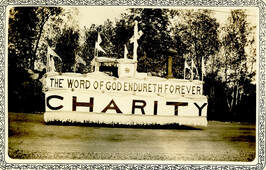 West Acton Baptist Church float West Acton Baptist Church float Governor Curley and the others reviewing the parade by the Monument had just seen the Center fire company go by. They were then able to see, five hundred yards away, a float farther back in the parade going up in flames. One can imagine the chaotic scene as the firemen took their chemical apparatus and raced back past the other marchers “with sirens screeching and bells clanging” to fight the fire. Reports mentioned that hundreds headed toward the excitement, necessitating a good deal of crowd control by local police and American Legion members helping out. The burning float represented the West Acton Baptist church. A sturdy framework had been built on top of and all around a truck owned by Jesse Briggs. The framework was then decorated with religious messages and flags. The float featured a pulpit displaying an antique Bible from the church. Driving the truck was the church’s organist, Alden Johnson, accompanied by the truck owner’s son Russell. When the engine caught fire in front of Horace Tuttle’s house on Main Street, Mr. Johnson pulled over. The doors being blocked, both men had to climb out of the truck’s windows and jump to safety. The firefighters were on the scene quickly, but they had a hard time getting to the engine fire, as the float was so well built that it took time to rip it apart. Somehow, the items on the float that belonged to the church made their way safely into the hands of its pastor, and no one was injured. The truck, however, had a very bad day. The importance of the bicentennial celebration to the townspeople who took part is evidenced by the large number of related items that were carefully saved and eventually donated to the Society. We have programs, articles describing the events, souvenirs, pins, photographs including three copies of a panoramic picture of the pageant’s participants, pageant dialogue written by Evelyn Knowlton, clothing worn in the pageant, a telegram sharing the news that one of the expected speakers was hospitalized, and letters from invited dignitaries who did not attend. Among the pictures, there is even one of the church float before its demise. Newspaper photographers were on hand to capture the firemen at work, their pictures accompanying articles with headlines such as “Two Jump from Blazing Float,” “Two Men Leap from Burning Float During Spectacular Parade in Acton,” and “Men Narrowly Escape Flames as Decorated Truck Bursts Forth in Fire at Height of Great Bi-Centennial Celebration with Governor as Guest.” The Boston Herald may have referred to “the little town of Acton, almost forgotten but sturdy and proud” (July 14, 1935, p.6), but those who attended the parade seem to have found Acton quite memorable. A Selection of Items in the Society's Collection: Sources Available Online:
“Acton Bells Will Ring on 200th Anniversary,” Boston Globe, July 13, 1935, p.20. “Acton Plans Three-Day Gala Celebration July 20, 21-22,” Concord Enterprise, July 3, 1935, p. 1. “Acton’s Bi-Centenary,” Boston Herald, July 14, 1935, p. 6 B. “Acton Celebrates 200th Anniversary”, Concord Enterprise, July 17, 1935, p. 1. “Acton Marks Bi-Centennial,” Boston Herald, July 20, 1935, p. 15. “Acton Cannon Booms at Sunup,” Boston Globe, July 20, 1935, p. 3. “Two Jump from Blazing Float in Acton as 200th Anniversary Fete Opens, “ Boston Herald, July 21, 1935, p. 1. “10,000 Attend Acton Exercises,” Boston Herald, July 22, 1935, p. 10. “Faulkner Family Annual Reunion,” Boston Globe, July 22, 1935, p. 19. “Military Ball Ends Acton Fete – 10,000 Witness Pageant Celebrating Town’s 200th Anniversary,” Boston Herald, July 23, 1935, p. 24. “Firing of Salute Opens 200th Anniversary in Acton” and “Military Ball Final Event of Observance,” Concord Enterprise, July 24, 1935, p. 1, 4. Additional Scrapbook Clippings with incomplete references: “Acton Celebrates 200 Years as a Town,” Boston Transcript, no date. “Historic Glories of Acton to Be Renewed,” Boston Post, no date. “Acton Holds Successful Bi-Centenary Celebration,” Concord Journal, no date. “Expressions of Regret” (from Franklin D. Roosevelt and Carlos B. Clark), no newspaper or date. "Blaze in Acton Parade Float Provides Thrills for Throng,"probably Boston Globe, no date. "Firemen Provide Real Exhibition of Quick Work," Boston Globe, no date. “Churches of Acton Note 200th Observance, Boston Globe, July 21, 1935. “Church Notes,” (South Acton), no newspaper or date. “Little Acton,” Boston Post editorial, July 16, 1935 (no page) “Pageant Brings Acton’s Celebration to Close,” labeled “Boston Globe, July 22, 1935,” but it was not in digitized version (or perhaps edition) of that day’s Globe. 5/2/2022 The Good Idea That Split a Town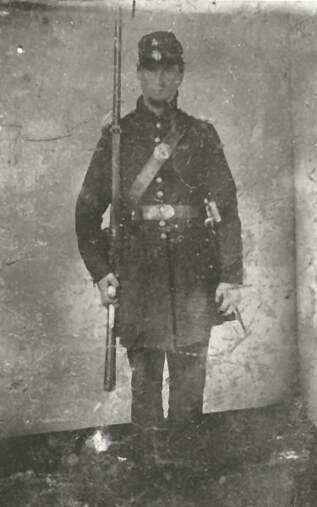 Soldier suggested to be Samuel Burroughs, Co. E, 26th Reg. Soldier suggested to be Samuel Burroughs, Co. E, 26th Reg. In our previous blog post about the postmaster controversy in 1880s South Acton, we mentioned that one of the underlying factors was probably resentment and distrust related to an ongoing dispute over the payment of bounties to some of Acton’s Civil War veterans. Despite repeated attempts by Acton’s townspeople to pay them, the veterans had never received the money. In 1882, Massachusetts enacted a law (Act of 1882, Chapter 93) that would have authorized the town to make the payment, but a lawsuit by a few influential (and high-income) taxpayers had sought to block it. The course of the controversy was somewhat complicated, but in the long run, to many Actonians, the issue became about more than money. Resentment festered and found outlets in a number of other disputes in the 1880s. The Background Acton sent several companies to the Civil War. The first, Company E, 6th Regiment, went out immediately upon Lincoln’s call for three-month volunteers in April 1861. After the men returned from their service around Baltimore, a company with a three-year enlistment was formed. Company E of the 26th Massachusetts Regiment was organized at Acton in August 1861 and was mustered into service in Lowell on Oct. 18. They were sent first to Ship Island in the Gulf of Mexico and then to Louisiana. Another company went out in August 1862 -May 1863, serving in Virginia, and a 100-day company served July-Oct. 1864 around Washington and on prison-guard duty on an island in Delaware Bay. Both of the latter companies were known as Company E, 6th Regiment. As in previous wars, it was important to the town that it supply soldiers to the cause. Towns were expected to fill a quota based upon population. If they could not fill their quota, they were threatened with a draft. Early in the war, patriotism and idealism were enough to get men to enlist. As the years wore on and the toll of war became more obvious, towns, states, and the federal government started offering financial incentives to induce men to join up. Known as bounties, the payments differed from place to place and over time. Not surprisingly, these disparities caused trouble. A federal bounty of $100 had been offered since early in the war, but it was deferred until the soldier was discharged (honorably). The Militia Act of 1862 required the states to institute a draft if they could not meet their enlistment quotas. In March 1863, Congress passed the Enrollment Act, authorizing a draft system, specifying that all able-bodied male citizens and immigrants who were applying to be citizens from 20 to 45 years of age would, if called, have to serve. Married men 35-45 would be drafted later than the others, and there were a number of exemption categories, mostly on the basis of the needs of family members. Most controversially, people could pay for a substitute to go or, if a substitute was not available, pay $300 to the Secretary of War for one to be found. The Enrollment Act and the ensuing Draft Riots in New York City that summer had pointed to the urgency of getting and keeping men in the ranks. On October 17, 1863, Lincoln issued a proclamation calling for 300,000 additional troops, to be raised by the states according to their quotas. Enlistments would be “deducted from the quotas established for the next draft” which, if a state did not make its quota, would begin on the 5th day of January, 1864. The Secretary of War upped the federal bounty, with a premium paid to reenlisting veterans. Meanwhile, Massachusetts was doing its best to fill its overall quota, and its towns were doing the same, offering bounties for enlistment or re-enlistment. Though originally the intention of the bounties was to support a town’s own soldiers, there was certainly an incentive to fill the town’s quota with any soldiers, wherever they could be found. There were some unintended consequences of the system, however. Unscrupulous recruits would sign up, claim a bounty, and never report to camp. These “bounty jumpers” might then sign up elsewhere, possibly under an assumed name, to get another bounty. Other frauds were to sign up and collect a bounty even though the recruit knew that he would eventually be rejected from serving (because of a disability or signing up underage, for example). A more basic problem with the system was that towns that could afford to pay large bounties were more likely to fill up their quotas than towns in greater financial difficulty. Disparities of bounties and the substitute exception yielded the impression that the rich were able to avoid the worst consequences of the war while the poor fought. Some of those who hired the substitutes, considering it a financial transaction, felt that they had the right to be reimbursed for their substitute payment. Some were of the opinion that those who went as substitutes, because they were paid to go in place of a drafted man, did not deserve the bounty for going to war. The divide between the poor, whom some judged for enlisting for the money offered, and the rich, who could afford to pay for a substitute, grew. There is no doubt that some bitterness that festered in Acton after the war was due to this economic divide. To try to introduce more equity into the system and to deal with some of the bounty-jumping problems, Massachusetts’ legislature passed a number of laws. In fairness to all parties in Acton’s bounty dispute, even with the benefit today of being able to read the digitized laws of the Commonwealth, the bounty laws make confusing reading. It must have been quite hard to keep up with them in the early 1860s, during a war, and especially in places with poor communication. Practice did not necessarily follow the intentions of the lawmakers. One of those intentions seems to have been that local bounties would stop, although towns seem to have interpreted the laws as limiting local bounties, not eliminating them (See Chapter 91, approved March 1863). A law passed in a special session in November 1863 (Chapter 254), set a uniform Massachusetts bounty at $325 for those who enlisted for three years. Though well-intentioned, the new law did not solve the problems. Rightly or wrongly, a number of towns’ representatives continued promising what they believed to be the maximum local bounty allowed at the time for the reenlistment of serving soldiers, $125. Acton’s Veterans Reenlist Acton’s bounty controversy centered on the soldiers of the 26th Regiment who had been sent to Louisiana in 1861 and served there through the beginning of 1864. During the company’s early service, the most harm came to the soldiers through disease. In June, 1863, the Regiment saw action at LaFourche Crossing and later made an attempt to take Sabine Pass. In the fall of 1863, it went to Opelousas and New Iberia, Louisiana. A November 27, 1863 letter from Delette Hall to his cousin Henry Hapgood (who had returned from the nine-month company sick) said: New Iberia is quite a villiage. About 50 miles from Breashear City on Bayou Teche River. This is quite a muddy place in wet weather We have to ditch the ground to keep from being drowned out Yesterday was Thanksgiving Day. but was not observed here except by issuing a ration of whiskey to the men. I thought of you all & if I was not there my mind was. I was on Picket & had a piece of salt pork & some hard tack for dinner. Well that was a little better than I had two years ago in Boston harbor. & next year I hope I shall be at home. We shall soon be nine months men our term expires the 18th Oct 186[4] which day we were mustered into the U. S. Service. It seems a long time to look ahead. I hope the rebs will get enough before the year is out. Clearly at that point, Delette Hall and his compatriots were not thinking of reenlisting. At the end of 1863, the Union army needed to keep seasoned men in its ranks. Experience showed that raw recruits were more likely to desert. The hope was that reenlisting soldiers would be inured to camp conditions, be willing to follow orders, and stay. Men who were acclimated to conditions in the South would have been considered an asset to the 26th Regiment. To understand what happened to spark the bounty dispute, we have to rely on testimony given much later. A two-sided supplement printed by the Acton Patriot laid out all that was said at a hearing before the Legislative Committee on Military Affairs, January 26, 1882 (in the Society’s collection and also transcribed by Brewster Conant). By the time one has read through the claims and counterclaims, one is hard-pressed to know what really happened. There were contradictions, inconsistencies over time, fading memories, and the influence of “circulars” and petitions on people’s interpretation of events (operating like the social media of the time). Also, by 1882, the needs of the war were long past, whereas the pinch of tax bills was a present problem. Though it is impossible to be completely sure of who knew what and when they knew it, most people in the post-war period seem to have agreed upon a few points. Acton’s Captain William H. Chapman, veteran of the 3-month original Acton Co. E, 6th Regiment and by late 1863 the Captain of Co. E, 26th Regiment, was also serving as the recruiting officer of the 26th Regiment. He was aware of the need for trained soldiers and of competition from other Massachusetts communities that he believed were offering local bounties to soldiers to re-enlist, with the quota credit going to those towns. Concerned that Acton would lose its soldiers to other towns offering financial incentives, Capt. Chapman told the men of the Acton company that Acton would “do as well by them as any other town” if they would reenlist to the credit of Acton. The going bounty rate at that point seems to have been $125. In later years, few disputed that the soldiers reenlisted in early 1864 in the 26th Regiment, for 3 years or the duration of the war, believing the promise that Acton would pay them a bounty of $125. Few disputed that Captain Chapman made the promise. The original dispute centered on whether or not he had been justified in making the promise and whether the town had the legal (or moral) obligation to keep it. Part of the problem with the later bounty dispute is that people were looking back many years and judging based upon subsequent events. At the time that Capt. Chapman was recruiting, the Regiment was in New Iberia, Louisiana. According to his later testimony, the mails were sporadic and it was not feasible to send messages to Acton by telegram. One can see how the captain might have felt that he needed to make decisions on the spot. Back home in Acton, however, there was a recruiting committee who felt that they should be the ones making decisions, particularly with respect to how the town’s money was spent. They also were more likely to have had a chance to read the laws passed by the legislature. The recruiting committee denied having authorized the bounties in advance and claims were made that no one knew about the bounty promise, but Luther Conant, longtime moderator, remembered that the issue was discussed at the 1864 town meeting. The war went on. After much of Company E reenlisted, the 26th Regiment was sent to Virginia where the company moved into action at Winchester (Opequon Creek) on Sept. 19, 1864, Fisher’s Hill on Sept. 22, and Cedar Creek on October 19. The company had lost a number of men to disease and also lost five men as a result of the fighting at Winchester, including Delette Hall's brother Eugene. Some were injured, including Captain Chapman, who managed to survive a gunshot wound to the head. The Company stayed around Winchester through May 1865. They spent a month in Washington, D. C., then were sent to Savannah. They were discharged in September 1865. Undoubtedly the men expected that when all was said and done, they would be paid their promised bounties. During the war, the town had paid some recruits bounties. The 38 members of the nine-month company recruited in the fall of 1862 received $100, with an additional $25 for the 23 recruits “called for from this town on the first quota” who signed up for three years. The town voted in December of that year that if it were required to supply more men, the recruiting committee was authorized to offer the same bounty to any who enlisted or were drafted. The 1862-1863 town report listed every man in service and whether or not he had received a bounty payment from the town. (The state seems to have retroactively reimbursed the $100 bounties paid to the 1862 recruits.) In November 1863, the town voted that the Selectmen plus three additional Recruiting Committee members would have discretionary powers regarding bounties. In November 1864, the town voted that their recruiting committee should investigate the claims of the town’s serving soldiers and those who had returned home and that the town should raise $5,500 to recruit men for the war. Given all of that, it does not sound unreasonable for Capt. Chapman to have thought that the town would back his claim that the town would do as well by its men as other towns were doing. However, the war ended, (most of) the veterans came home, and the claim had never been paid. The War’s Aftermath At the March 1866 town meeting, Acton debated paying those soldiers who enlisted in 1861 and reenlisted in 1864 the same bounty that had been paid to soldiers who enlisted later and served in the US service for less time. The town decided to postpone any action until the state and federal governments had taken action on bounties. According to Phalen’s history of Acton, “As things later developed this proved to be an unwise decision but at that time nobody could have foreseen that by this action the town planted the seeds for its most vicious and prolonged local battle.” (p. 197) Though this fact was not usually mentioned in the Acton fight, bounty claims took up a great deal of energy on the part of both state and national committees in the post-war years. The Massachusetts Legislature’s Committee on Military Affairs dealt with petitions of many towns, including petitions from Acton in three different sessions. Acton voted to pay soldiers’ back bounties in 1872 and petitioned to be able to pay it. In early 1881, the Committee heard petitions, not only from Acton, but also from Wilmington, Stoneham, East Bridgewater, Andover, and Natick, all rejected. Acton’s petition went nowhere until the third time it was presented in early 1882. In March 1882, the House passed a bill that would allow Acton to raise up to $4,000 to pay $125 to each of the veterans who had reenlisted in the 26th Regiment under the call of the president dated Oct. 17, 1863, were credited to Acton, and were never paid. The bounty could be paid to the soldier’s heirs if he had died. In response, at town meeting on April 3 1882, the town of Acton voted to pay the bounties, but the measure passed by only four votes (219 to 215). By this point, the controversy had split the town down the middle, apparently even at town meeting where Phalen wrote that “The glowering partisans congregated on either side of the center aisle.” (p. 231) Town meeting records mention that “it was voted to have the area in front and on each side of the Desk kept clear so that voters need not be obstructed in approaching the Polls.” Whether this was because of hostility or because it was Acton’s largest town meeting ever is not clear. After the vote, a cannon was shot off in South Acton in celebration (Acton Patriot, Apr. 6, 1882, p. 1) However, as often happened in Acton politics, a vote taken was not seen as final, but only as an opportunity to reconsider. Two town meetings followed. Both sides undoubtedly tried to sway opinions and get out the vote. The Acton Patriot’s Concord Junction reporter mentioned on Sept. 7, 1882 that “Thomas Clifford was earnestly sought for early Saturday morning by one of Acton’s heavy taxpayers. His object was to secure his vote against paying the soldiers’ bounty.” Probably the same heavy taxpayer “offered to bet $100 with any live men that the soldiers get beat.” (page 1) These efforts did not change the outcome, however. On August 21, an attempt to overturn the vote failed by 204 to 194, and on Sept. 2, the anti-bounty side lost again by 206 to 198. Phalen’s history of the town of Acton seems to indicate that the resolution of the bounty issue happened in 1882 with the Senate and House overriding the governor’s veto. “Thus ended the great bounty fight beside which all other Acton rows seem rather tame. The payments were made with reasonable promptness with one exception...” (p. 233). Searching Acton’s town reports did not yield a record of those payments; in fact, the bounty tax seems to have been assessed, held onto, and then without explanation refunded by the town. The reason was legal wrangling that went on much longer than is mentioned by Phalen. Not able to swing the vote in their favor, the opponents served an injunction on the town to prevent payment and hired Judge E. Rockwood Hoar as their counsel. According to newspapers of the time and legal synopses, the opposition’s case made its way through the legal system and was heard by the Supreme Judicial Court of Massachusetts in early 1885. The case hinged on the constitutionality of the 1882 act of the Legislature (chapter 93) that authorized the town to raise taxes to pay the bounties. According to the Supreme Judicial Court’s ruling, the town of Acton never promised to pay a bounty, did not (directly) receive the men’s services as soldiers, and was not responsible for paying them compensation. Therefore, it had no debt to them. Any payment made so long after the fact would be akin to a gift of gratitude to private individuals rather than payment of a debt for a public purpose (as inducing enlistments would have been). Taxes must serve a public, not private, purpose, and therefore, the 1882 law allowing Acton to raise taxes to pay the veterans of the 26th Regiment was unconstitutional. The bounty opponents must have thought that the matter would end there, but the dispute had gone too far by that time. By March, 1887, the town of Acton was petitioning the state to pay the bounties, because Acton was barred from raising the money itself. (Boston Journal, March 11, 1887, p. 1) Both sides testified again. The Society owns a copy of the opposition’s testimony that started with the statement that they were aware that they were “opposing the claim of the men, who, in a critical time in our history, rendered with such distinguished services to the country that it seems almost like robbery, - unpatriotic at least, to withhold from them anything in the way of pensions or gratuities that they may demand.” The opponents followed up, however, by saying that the Commonwealth owed the men nothing because this was a town matter. (Of course, the town previously had been kept from paying the claim by this group’s lawsuit.) The testimony ended with “We would respectfully ask, therefore, that you, as guardians of the public treasury against unfounded claims” would find against the town of Acton. The Society also owns a copy of the proponents’ testimony. The testimony mostly reiterated points made before, although it does contain a paragraph of personal attack on the opponents; the sides were portrayed as humble veterans versus the rich. At any rate, the Senate Committee on Claims reported favorably on the town’s petition. (Boston Journal, April 15, 1887, p. 3) In May, the Committee on the Judiciary ruled that the Legislature has the right to appropriate and pay money to individuals, even if it could be portrayed as a gratuity, if there were “some equitable ground upon which such payment ought to be paid.” (Boston Journal, May 5, 1887, p. 2) The legislative debate on the measure was reported in June, 1887. Some cited fear of opening the floodgates to other, similar claims. However, the majority, including Mr. Conant of Acton, felt that the resolve was an “act of justice.” (Boston Journal, June 8, 1887) Finally, the joint Resolve of 1887, Chapter 106 ordered that $125 was to be paid by the Commonwealth to the 31 soldiers (or their legal heirs) of the 26th Regiment who had reenlisted and never received the bounty they were expecting. The governor had objected to the Resolve, but the Senate and House of Representatives passed it over the Governor’s objections on June 16, 1887. The fight was finally over. The veterans got their bounties and apparently it was the people of Massachusetts as a whole who made good on the promise, rather than the people of Acton who had voted repeatedly to pay it. It is clear that a dispute allowed to fester for over 20 years was extremely harmful for the town. Putting off dealing with the problem in the hope that it would conveniently disappear led to infinitely more trouble later. As the bounty dispute dragged on, campaigns for support, including assumptions, exaggerations, and character slurs, led to increasing polarization. Both sides’ attitudes seem to have hardened into a belief that they were fighting for the “right.” Newspapers elsewhere noted Acton’s contentiousness with comments such as “Acton folks are still squabbling...” (Springfield Republican, Aug. 19, 1882, p. 6) What becomes most apparent is that the bounty dispute reflected divisions in society. On the one hand were those trying to prevent payment. They portrayed the veterans asking for bounties as greedy opportunists who had not received a legitimate (or perhaps any) promise of payment before they reenlisted and who were trying to take hard-earned tax money from Acton’s struggling farmers and from families of veterans who had not received a bounty. Those supporting the bounties believed that the town should make good on the promise. They portrayed the men against the bounties not as struggling farmers, but as rich taxpayers who were too stingy to pay the money that had been promised to men who risked their lives in the war. Underneath the accusations were basic issues, especially about who has the right to run the town. Should it be the influential, well-to-do men who had served (and controlled) the town for many years, or less-wealthy men who perhaps moved about looking for opportunity? The committee at home during the war had been either elected or appointed and felt they had the right and the duty to act for the town and decide how to spend its money. Those who were far away in the field at the time felt justified in recruiting for the town. The fact that there was some justification for both sides’ viewpoints made the divisions much more entrenched. As is often the case, after all of the conflict that was reported in the newspapers of the day, the actual resolution and payment of the bounties was apparently done without much fanfare. Though it is likely that the participants remembered the vitriol involved in the dispute, life moved on. Three years later, Acton had a Memorial Library honoring its veterans’ service. Acton’s veterans of the 26th Regiment (and of the bounty fight) were proudly listed at the entrance of the new Library. References:
In the nineteenth century, people from larger places seem to have regarded Acton as a “quiet farming town,” or even “semi-lethargic.” (Boston Globe, July 21, 1885, p. 2 and Sept. 16, 1885, p. 8) It therefore came as a newsworthy surprise that 1880s Acton kept erupting into conflict and then apparently retreating into festering resentment. Our foray into 1880s Acton started with an article entitled “OUSTING AT ACTON” that reported that two Republican postmasters had been replaced by two Democrats. (Globe, Sept. 5, 1885, p. 5). That might have been an interesting story, except that South Acton’s incumbent postmaster J. K. W. Wetherbee was in fact a Democrat, as was his replacement. Trying again, the Globe added to the excitement on Sept. 11 with an article entitled “SCHEMING POSTMASTERS – Charged with Fraud by the Government.” (p. 2.) This was a story of both politics and potential fraud; to understand what was going on, we had to learn about the role of a small village (fourth class) postmaster in the nineteenth century. Acton’s Early Postal Service Today, we are accustomed to having mail delivered to us. People living in Acton before the twentieth century did not have that luxury and had to pick up their own mail. Sometimes people had no idea that letters were waiting in a post office; a postmaster would advertise a list of letter recipients in the local paper. Digitized newspapers show that practice existed even after 1900. (Concord Enterprise, Feb. 26, 1902, p. 8). Before Acton had a post office of its own, the Concord postmaster periodically advertised that Acton residents had letters awaiting them there. (See Middlesex Gazette, Oct. 11, 1817, p. 4, for example.) According to Shattuck’s 1835 History of the Town of Concord, at some early date, a post office was briefly established in Acton in the care of “Mr. Perham” and then reestablished in 1828 in the Acton Center law office of Silas Jones. Acton has had its own postal service since that time. In the very early years, mail was not common, and people picking up letters were expected to pay the delivery cost. The advent of pre-paid postage stamps made picking up letters less expensive to the recipient, but it still entailed a trip; obviously, it was advantageous to have a post office closer to one’s home or place of business. A village needed a certain size to attain its own post office. The 1844 arrival of the Fitchburg Railroad led to growth in both West and South Acton. In 1848, West Acton’s first post office was established in the office of Dr. Reuben Green. In December 1851, South Acton got its first post office with postmaster Ezra C. Radiman (name spelled variously, exact location as yet unknown). East Acton, known then by the name of Ellsworth, got its own post office in March, 1873. The postmaster, l. W. Flagg, had a store there. North Acton did not have a post office until March, 1886 when Charles Miller was appointed postmaster. The postmaster would have been responsible for people’s mail and also for money. One would hope that people were appointed on the basis of their competence, honesty, and incorruptibility, and that may well have been the case in Acton. In general, being able to appoint the postmaster was considered a privilege of elected officials who apparently often used that power to distribute patronage jobs. Postmasters were expected not to use their position to promote their political party’s candidates, but the postmaster’s role at the center of village life was certainly a useful connection for politicians. Until late in the nineteenth century, the location of the post office would depend upon the postmaster. As the 1800s progressed, Acton’s village post offices were often located in a postmaster’s store. Having people’s mail would have increased foot traffic to one’s business. The postmaster’s tenure was not guaranteed; after an election, the position might go to a competitor from the winning party. Though changes in postmasters are traceable through records, the actual politics behind some of the appointments are not always clear. For example, in 1855, newspapers including the Boston Atlas (July 19, 1855 p. 2) alleged that the Acton “Centre” post office was being kept in the barroom of the Know Nothing House (a reference to a political party of xenophobic tendencies), but the July 25 Boston Herald clarified that the hotel, apparently run in the past by a Know Nothing supporter, was now run by a Democrat. The post office had been moved from the shoe shop of John Fletcher to the “public room” of a small county hotel that served no liquor. (p. 2) Phalen’s History of the Town of Acton describes old-timers’ memories of the Center post office in the hotel. It had a “unique contrivance for mail delivery” that operated like a Lazy Susan. “There were pigeonholes marked with the letters of the alphabet. A person seeking mail would turn the wheel until his initial appeared at the opening whereupon he separated his mail from the rest and departed, unless of course the office happened to be vacant and he were of a curious turn of mind. In later years the device was abandoned and standard boxes installed with a pull bell that would summon the postmaster.” (p. 192) Changing the post office location would obviously necessitate moving or installing people’s mail boxes. 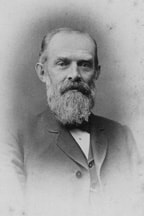 JKW Wetherbee JKW Wetherbee As mentioned, the postmaster job was considered a patronage position, often jealously guarded by the Representative in power at any given time. Surprisingly, in Acton, a more evenhanded approach had been taken under the Republican administration leading up to the 1885 brouhaha. The practice had been to select two Republicans and two Democrats for the four village post offices in town. (Globe, Sept. 16, 1885, p. 8) Part of this magnanimity may have been due to the confidence of Acton Republicans that the town was “sure to go Republican.” (Boston Journal, Aug. 18, 1884, p. 2) The pay of the postmasters was dependent on the volume of business. According to the Globe (Sept. 11, 1885, p. 2), postmasters of the smallest, “fourth class” post offices did not receive a salary per se but earned percentages of the stamps cancelled at the office each quarter: 100% of the first $50 with declining percentages (60, 50, 40) on amounts above that. There was an incentive to increase the amount of mail sent through one’s office, but there would be a natural ceiling on the number of letters leaving a small village. Another source of business would be companies’ “circulars,” essentially advertising flyers that would be sent out in bulk. The Globe claimed that certain postmasters had concocted “an ingenious little scheme” for the mailing of large quantities of circulars at their offices that, arguably, should have been deposited at the large offices. Someone in Washington decided that small post offices sending out circulars was a sign of irregularities and sent the postmasters a bill for past commissions earned on the circulars. The ingenious, accused plotters were the postmasters of Littleton Depot, Littleton Common, South Acton, Townsend, West Townsend, and a few other places. Caught in this situation was Jonathan K. W. Wetherbee, a pillar of the South Acton community, partner in the highly successful firm of Tuttles, Jones & Wetherbee, long-time town treasurer, selectman, and, on occasion, lender of money to the town. He had served as South Acton postmaster since the fall of 1870. When J. K. W. Wetherbee was replaced by another Democrat amidst accusations of fraud, the degree of excitement in Acton was, according to the Globe, more than one might expect from the occurrence of a cyclone or a raging epidemic. (Sept. 16, 1885, p. 8) Fraud or Politics? The author of the Sept. 16 Globe article actually talked to J. K. W. Wetherbee to get the postmaster’s story. Apparently, C. M. Lawrence, Littleton resident and representative of a Boston business, had approached outlying postmasters saying that he wanted to send circulars from their offices. The Forge Village postmaster had checked with his Washington boss whether he could refuse to accept them, as the sorting was going to add to his work load. The official response was that the postmaster was required to accept all mail presented to him and that most postmasters would welcome the extra business. When J. K. W. Wetherbee was offered the same business opportunity, he contacted Washington and was told to send a copy of the circular. He did and received no reply. Having fulfilled his obligation, and in light of the response to the Forge Village query, Wetherbee felt confident that the circular business was acceptable. Several years later, however, he received a bill from the government for over $1,000 in past commissions. In his interview with the Globe Reporter, J. K. W. Wetherbee stated: “My office cost me $100 the first year I had it on account of help I had to hire, as my business would not allow of my giving it much of my personal attention, and the office has been broken into and robbed three times. Thus I think I have been robbed enough already. It seems rather singular to me that after communicating with the department relative to this circular business, and having my quarterly accounts audited and allowed, that this demand should now be made upon me.” After this point, the story seems to have disappeared from the newspaper. In typical fashion, the exoneration of the postmasters seems not to have been reported. J. K. W. Wetherbee served as the town’s treasurer and in other positions of trust into the 1900s and continued to lend the town money; clearly the townspeople did not question Mr. Wetherbee’s character. No one seems to have given credence to the charge of fraud. Nonetheless, Wetherbee was replaced as postmaster. There must have been more to the story. According to the Sept. 16, 1885 Globe, Ruel Williams, a member of the town Democratic Committee selected to go to the state convention, went to see James Tuttle, another Democratic pillar of the South Acton community who was a business partner and brother-in-law of J. K. W. Wetherbee. Tuttle was told that Wetherbee probably would have to go. The implication seemed to be that it was due to the fraud charge. The national Democratic party had just elected its first president since 1856 with a platform that included civil service reform. Perhaps the local committee was trying to impress the State Committee by “cleaning house.” James Tuttle was upset that other Democrats in town had not been informed of the potential change, and no one had talked to J. K. W. Wetherbee. Tuttle had planned to start a petition, but the postmaster change was made before he even had a chance. He said, “We are all mad, all classes, sects and political complexions. Yes, indeed, the village of South Acton is stirred up.” Accusations and counter-accusations from supporters followed, but the change was made. 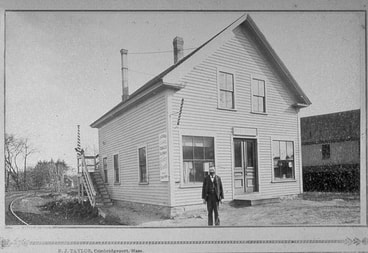 South Acton Post Office, south of railroad crossing South Acton Post Office, south of railroad crossing Though the committee prevailed, they had omitted to consider one detail in their planning. Tuttles, Jones & Wetherbee owned much of center of South Acton. The post office had been located in a James Tuttle-owned building, apparently in the news stand of Dana Hayward who worked as postal clerk. The replacement postmaster Lorenzo Reed found that no location was available in the village for him to establish his post office. As James Tuttle said, “I don’t propose to turn out good tenants to please him.” Eventually, the new postmaster, “accompanied by a justice of the peace, visited every property owner in the centre of the village who had land or a building which could be utilized and offered to buy, hire, or lease such, but no opportunity to do so was offered him.” His only recourse was to move the post boxes to his own residence. (Globe Oct. 20, 1885, p. 2) People were quite unhappy that they were going to have to trek to his house to get their mail, but eventually the furor died down as people realized that Reed was in a difficult position. Later, the post office was moved to a small building on the south side of the railroad tracks. Small town, Big Disagreements So why did this conflict erupt in the first place? We have not found anything to indicate that J. K. W. Wetherbee deserved to be replaced as postmaster, or even any reason that anger would specifically have been aimed toward him. What we did find was that Acton residents in the 1880s were quite disputatious. For example, as described in a previous blog post, in the spring of 1884, a disputed school committee vote for Superintendent led to two men claiming to be have been appointed, with angry supporters on both sides. Within three years, a bitter conflict over a teacher led to the resignation of a different Superintendent and most of the school committee. Rancor and factionalism seem to have been habitual in Acton at the time. The biggest conflict, and perhaps the root of much of the distrust and anger in town, was a dispute over paying back bounties to Civil War soldiers that consumed a great deal of energy in the early 1880s. Like the postmaster “muddle,” the bounty fight requires some background to understand and is the subject of another blog post. What Goes Around Comes Around Lorenzo Reed only served as postmaster until 1889. Democrat Grover Cleveland lost the 1888 election, politics shifted, and many postmasters were replaced in the following year. Time moved on, but complaints from South Acton didn’t completely die down. A petition campaign was initiated to influence the choice of postmaster in 1889, though that did not go far. (Concord Enterprise, Apr. 5, 1889, p. 2) On July 12, 1894, an item appeared in the Enterprise that fireworks were being sold in the post office, with pointed advice to the postmaster to “read what Uncle Sam says about it.” (p. 8) In 1897, there was a petition to appoint Frank W. Hoit as postmaster and to locate the office on the north side of the Fitchburg railroad. Rumors were flying that the signers of the petition were only schoolchildren; in fact, the petition was signed by the businessmen of the community, including many Tuttles, Jones, and J.K.W. Wetherbee. (January 14, 1897 p. 8) One of the signers was James Tuttle’s son H. Waldo, who was at the time serving as postmaster himself. On July 1, 1897, the Concord Enterprise reported that “The old post office is being fitted up for the new postmaster, who is expected to take possession July 1.” (p. 8) After all the controversy, the post office was back in James Tuttle’s building. 7/14/2021 Fun Times in the Summer 100 Years AgoA local newspaper article about South Acton a hundred years ago made us start thinking about what life was like for Acton residents that summer. The article mentioned that a new staircase and walk were being added to the west side of the old Post Office building, giving access to the newly-formed Young Men’s Athletic club rooms. “The walk in the rear will be six feet in width thereby [a]ffording the comforts of a piazza, where the members can sit, enjoy the beauties of nature in Theron park, watch the passing aeroplanes which of late has been of frequent occurrence, and wonder when the road sign is to be placed on the fountain.” (Concord Enterprise, August 31, 1921, p. 1) Curious about long how young athletes would be content to sit contemplating a road sign, we started investigating what people did for recreation in the summer of 1921. Reading the local newspaper, it would be easy to assume that summer vacations in 1921 were not so different from our own. The Enterprise reported on residents’ comings and goings as they had guests and visited friends and relatives. People vacationed at destinations similar to many visited by Acton residents today. They often headed to the beaches and mountains of New England, but some set out for places farther afield. Though not noted in the newspaper, much travel would have been done by train. 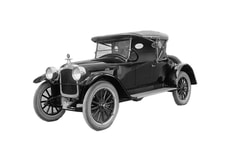 Hupmobile, c. 1921, Library of Congress Hupmobile, c. 1921, Library of Congress Automobiles were by now a more common part of life than they had been at the turn of the century, but residents’ car purchases were still reported in the paper. On August 31, for example, it was reported on the front page that Dr. Mayell was driving a Buick touring car, selectman Kingsley had a Ford, and Wesley Flagg and John Mekkelson had sport cars. Residents’ road trips by auto were highlighted in the paper all summer. It is easy to forget how different those trips would have been from our own experiences of the road, but occasionally an item in the newspaper reminds us of how driving has changed. The June 29 Enterprise reported on John Pederson’s trip to St. Albans in northern Vermont. (p.2, “Some Trip”) He drove continuously except to stop for meals, water, gas and oil. That sounds unexceptional, but it took him 23.5 hours to get there. The article did mention that Vermont’s roads were rough and mountainous in places. (The return trip in his truck loaded with furniture took even longer; hopefully he stopped somewhere for sleep.) John Pederson’s experience puts light on the ambition of Joseph Oliver who was reported in the August 10 paper to be leaving for California in his auto with his camping gear. (p. 1) It was probably helpful that he had previously been working in West Acton as an auto mechanic. By the early 1920s, autos were evolving. In 1915, Massachusetts had become the first state to mandate lights on automobiles, and federal standards for headlights were introduced in 1921. That summer, the local paper reported on the need for car owners to get their headlamps adjusted by authorized mechanics. (July 27, p. 7) Garages had sprung up in Acton and elsewhere to meet growing demand for service. John McNiff had closed up his blacksmith shop after 30 years of labor; he was reported to be contemplating opening a garage. (May 26, 1920, p. 7) There would have been competition. In the summer of 1921, ads ran in the Enterprise for the South Acton Garage, Fitzgerald’s Garage in West Acton, and the recently opened East Acton repair garage of Benjamin A. Kimball and Orville J. Fuller, the latter having already worked in automobile construction and repair for fifteen years. (June 29, p. 8) John Coughlin advertised that he would provide service “at your own garage”. (July 13, p. 4) Having a number of repair shops in town was quite useful. Despite improvements in automobiles, the downside of increased driving was dangerous interactions. The August 17 Enterprise reported on two serious accidents at Kelley’s corner the previous Saturday. (p. 1) In the late afternoon, a seven passenger touring car from Missouri struck broadside a Ford coming from Acton “with such force as to hurl it up against the building which stands at the northeast corner.” Fortunately, the occupants survived. Later Saturday evening as Mary McCarthy, Clara Binks, Bertha Gould and Frank Hayward were driving home from Lowell, they were struck by a “big car from Maryland.” Luckily, the damage was more serious to the cars than to the people. The paper called for improvement to the approaches to the busy intersection and for caution on the part of drivers. As one sits in traffic at that intersection of Main Street and Massachusetts Avenue, it is worth remembering to be grateful for stoplights. Finding Things to Do Despite the fact that roads had not yet caught up with the needs of automobiles, people in the summer of 1921 were on the go. Lawn parties were very popular, particularly as fundraisers. On the evening of July 21, the Acton Grange held its annual lawn party and dance. As announced on July 13, “The Maynard brass band will furnish a concert in the evening and the Highland Ladies’ orchestra of Somerville will play for the dance. There will be the usual attractions which make these lawn parties popular events of the summer.” (p. 5) The party was indeed a success. With convenient means of traveling, visitors came from Acton’s villages and elsewhere, including quite a few from Maynard. “It is said, that over two hundred automobiles were parked on the sides of Monument square.” (July 27, p. 4) Another popular diversion was “moving pictures,” regularly advertised in the Enterprise. There were often movies in the Concord State Armory to benefit the Red Cross and at a theater in Maynard, admission 25 cents for adults. Occasionally, a moving picture was shown in West Acton at Odd Fellows Hall. Acton residents also attended special out-of-town events. In June, several townspeople ventured to Lowell to see the Ringling Brothers and Barnum & Bailey Circus that offered “the greatest congress of attractions in history” with hundreds of performers and a huge “wild beast” display. “Not only will you see the artists who occupy the three rings, five stages, the great hippodrome track and the aerial rigging in the tent top, but four spacious steel arenas filled with wild beasts as well.” (June 8, p. 7 and June 29, p. 2) In mid-August, various people from Acton attended the Pilgrim Pageant at Plymouth. The paper proclaimed that “Although pageants have been greatly in vogue for the last 10 years or more, this one entitled 'The Pilgrim Spirit’ and written by Prof. George P. Baker of Harvard university in commemoration of the 300th anniversary of the landing of the Pilgrims at Plymouth has been pronounced by an eminent professor of pageantry as the greatest performance since the pageants of the ancients.” (Aug. 24, p. 1) 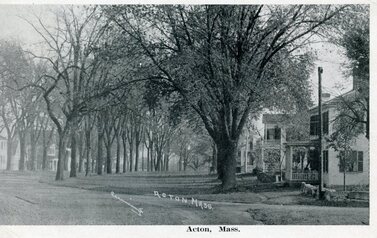 Postcard of Acton Center sent July 1921 Postcard of Acton Center sent July 1921 Despite the reporting of some residents’ comings and goings in the newspaper, there were undoubtedly many Acton residents who found their amusement in town. The first challenge for them would have been to beat the heat. Shade was appreciated; Acton benefited from earlier residents’ foresight in lining streets with trees. Ads for electric fans at MacRae’s in Concord appeared in the Enterprise for those whose homes and businesses had been wired for electricity. (Getting electricity was also newsworthy in 1921.) Piazzas seem to have been quite popular. Presumably they offered the chance of catching whatever breeze there may have been and, for those on the more traveled thoroughfares, a chance to see the world go by. With summer came insects, of course, and the newspaper reported that Edward Conant, Harry Tuttle, George Dusseault and the West Acton Baptist parsonage were all adding screening to their piazzas. (July 13, 1921, p. 5; July 20, p. 4) Some of those out on their piazzas would have been able to watch the President’s cavalry escort from the Plymouth Pageant as they traveled to an overnight campsite in Maynard. Fifty-seven men came through with sixty-seven horses and eighteen mules. (Aug. 10, 1921 p. 1 and 5) While references to the military in the Enterprise were fewer than they had been in previous years, war’s aftermath occasionally was mentioned. In August, Charlotte Conant and Gertrude Daniels organized a clambake and corn roast at the Conant place for twenty ex-servicemen from the Groton hospital. It was followed by an informal dance in the afternoon at the town hall. (Aug. 24, p. 4) For those actively inclined, summer meant sports. The Acton villages had baseball teams, as in the past. The West Acton team was briefly dubbed the Pirates, but the name does not seem to have stuck. (Aug. 24, p. 8) The newly organized (or perhaps re-organized) Campfire Girls and the Young Men’s Club had a track meet reported June 15. Reverend R. J. May coached the young men, and Mrs. May led the Camp-Fire girls. The paper noted, “It will be unique in having both boys and girls as participants although not competing against each other.” (p. 5) In July, the groups were putting on plays at the Congregational Church. The young men were trying to pay for baseball equipment. The “Nashoba” Camp Fire Girls, meanwhile, “were completing their beaded head-bands and hope to earn their costumes by their entertainment.” (July 13, p. 6) Golf was taking off as an activity. During the summer of 1921, the Calvin Whitney farm in Maynard was being turned into the Maynard Country Club. By August, its charter members included a number of Acton residents, although applications from some who already had been on the waiting lists of the Framingham and Concord clubs were being held back to give Maynard residents priority. (Aug. 24, p. 1 and Aug. 31, 1921, p. 1) When it was time to cool off, a popular spot was a swimming hole on Martin Street (near present-day Jones Field) where there were often twenty people swimming at a time. (July 27, p. 4) Apparently, however, there were a few problems with the place as a recreation spot. On August 3, the paper reported: “CITIZENS IMPROVING BEACH – In response to the call for workers issued last week, a number of citizens met at the swimming pool at the Martin street bridge and proceeded to do what they could to improve the general appearance of the place, both in and out of the water. This spot has long been utilized as a dumping place for all kinds of rubbish, such as tin cans, bottles, lamp shades, bicycle frames in quantity and variety sufficient to stock an old curiosity shop and a generous amount was dragged out of the water and put where it can no longer be a menace to the bathers. ... This bathing place has been a source of much pleasure to many people this season, even though those who lived at some distance from the pool were obliged to return home wearing their wet bathing suits, under raincoats. With the place once put in good condition and a suitable bath house built there, it would be a great public benefit.” (p. 8) Summertime Wasn’t Always Drowsy There are always those who push the boundaries to create a little excitement. On July 6, the Acton Center reporter mentioned that “The Fourth was very quietly celebrated except for the ringing of the town hall and church bells from midnight to daybreak, which act of over-celebration should never be permitted in the future. Someone who stopped at the drinking fountain on the common as an act of rowdyism, broke the two water pipes.” (p. 7) Another item of interest for many would have been hearing amplification for the first time. The August 17 paper reported that the meeting of the Acton Agricultural association (attended by 150 members) was followed by a social hour, “one feature of which was the exhibition of a ‘magno box’ attachment to a victrola, by Robert W. Carter, a member of the association, the effect of which caused the music to be heard with wonderful distinctness in homes over a quarter of a mile away.” (p. 1) The paper did not mention what music Mr. Carter shared with Acton Center, but records advertised for 85 cents in the Enterprise that August were variations of the Fox Trot and songs with catchy titles such as “Anna in Indiana” and “Molly on a Trolley By Golly With You.” (Aug. 24, p. 8) A different kind of noisy excitement was reported from South Acton on Aug. 17. The milk train was coming toward Martin Street on the Boston and Maine tracks at about 8:40 on a Sunday morning. The engineer, as usual, blew the whistle in warning. However, the valve that controlled the whistle could not turn off the steam, so the train stopped at South Acton with the whistle “shrieking at a terrific rate.” The engine with the disabled valve was backed into a rear yard, still shrieking, and another engine took the milk train to Boston. “During the time of making the shift and for fifty minutes after the fire had been dumped from the engine, the whistle kept up a continuous shriek causing consternation throughout the town. Many persons rushed to the station supposing it to be an alarm of fire or that some serious accident had taken place.” (p. 7) The most exciting event of the summer, however, seems to have happened in Maynard. On the first page of the August 10 issue of the Enterprise was an article entitled “Knickers Invade Maynard – What Will the Women Spring on Us Next?” Apparently, a woman had the audacity to walk down Main Street dressed in “knickers, just plain pants they looked like, golf stockings, high brown tennis shoes, shirt waist, topped with a bit of rouge on the cheek and hair bobbed.” The result was commotion, men “pop eyed with astonishment,” and all of Main Street agog at the woman who was (supposedly) “as indifferent to the stare of the world as the sunburned one pieced bathing suit extremist. Business was suspended as clerks and staid proprietors made for a glimpse ... At first stunned, curiosity soon let loose a chatter and exchange of opinion as to the new styles.” In 1921, it was apparently a sight worth sitting on one’s piazza waiting for. |
Acton Historical Society
Discoveries, stories, and a few mysteries from our society's archives. CategoriesAll Acton Town History Arts Business & Industry Family History Items In Collection Military & Veteran Photographs Recreation & Clubs Schools |
Quick Links
|
Open Hours
Jenks Library:
Please contact us for an appointment or to ask your research questions. Hosmer House Museum: Open for special events. |
Contact
|
Copyright © 2024 Acton Historical Society, All Rights Reserved
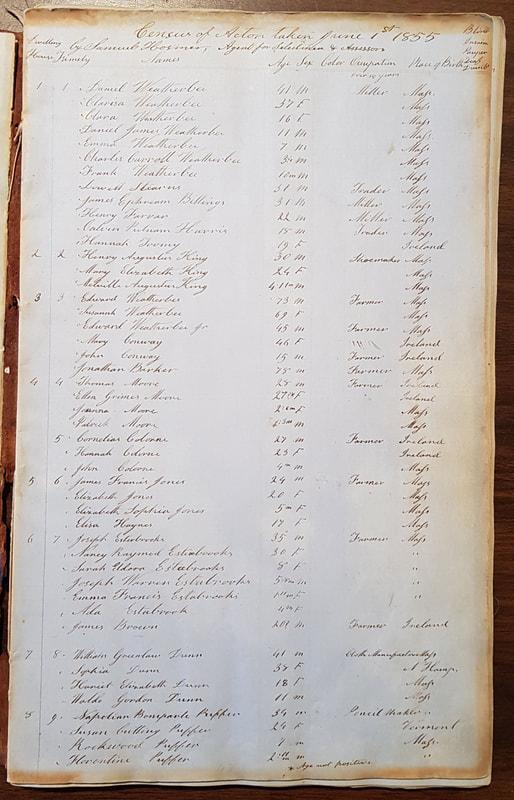

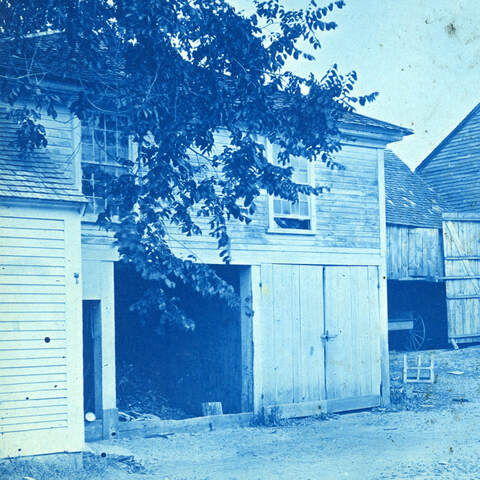
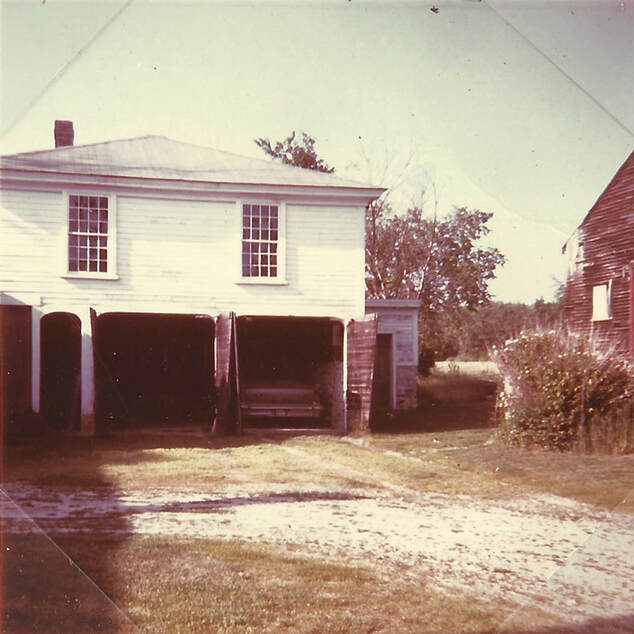
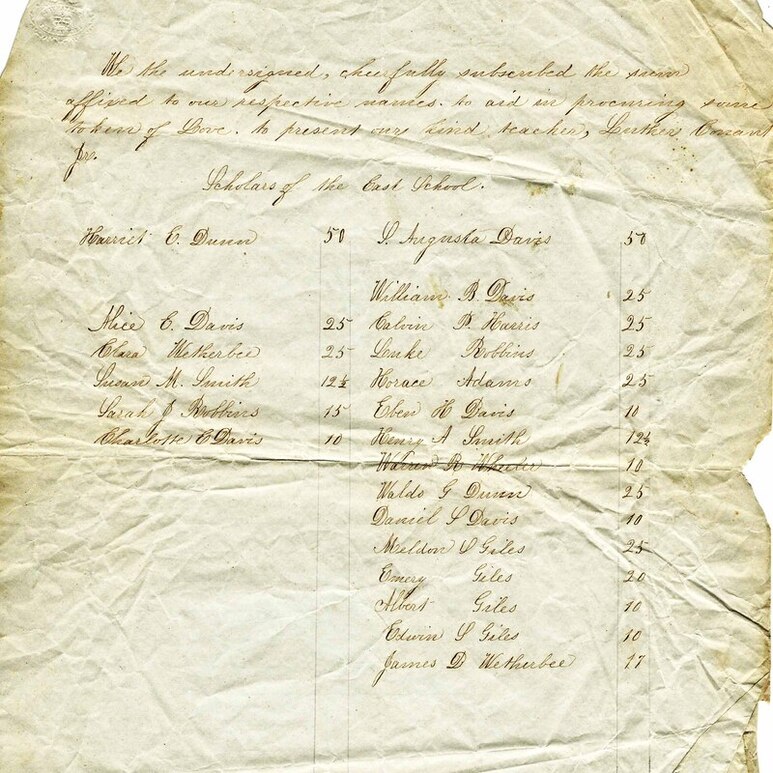
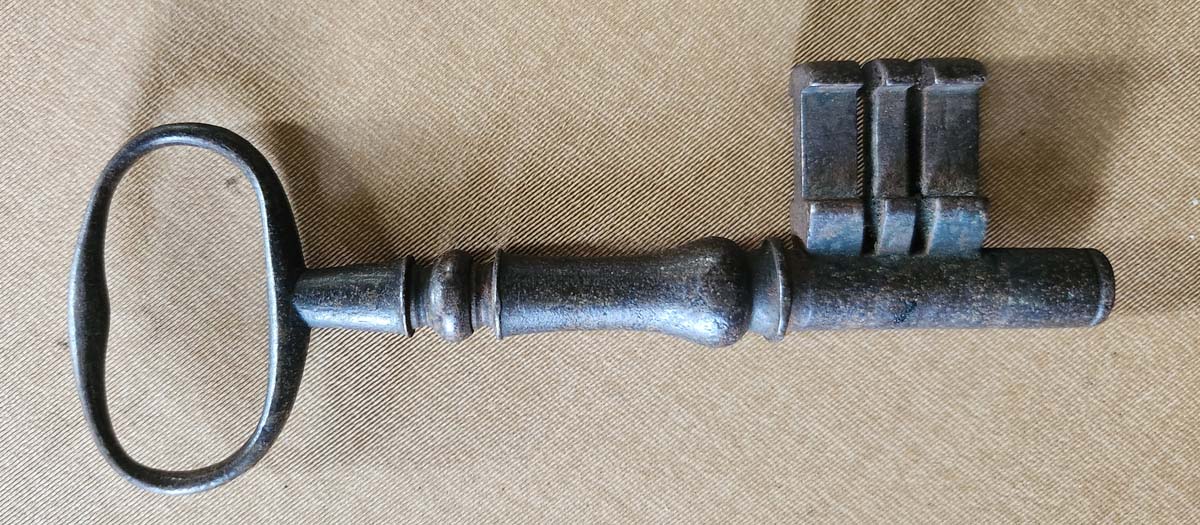
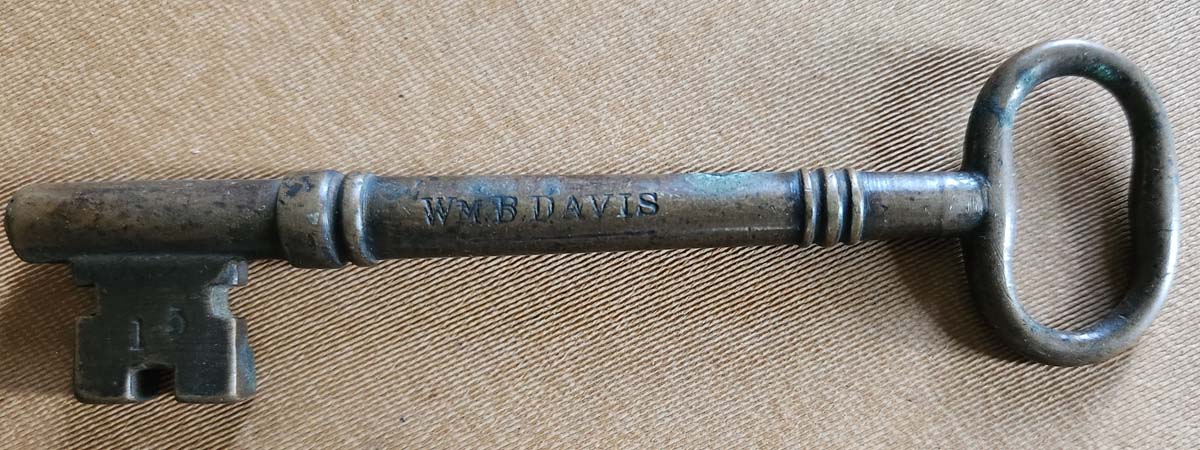
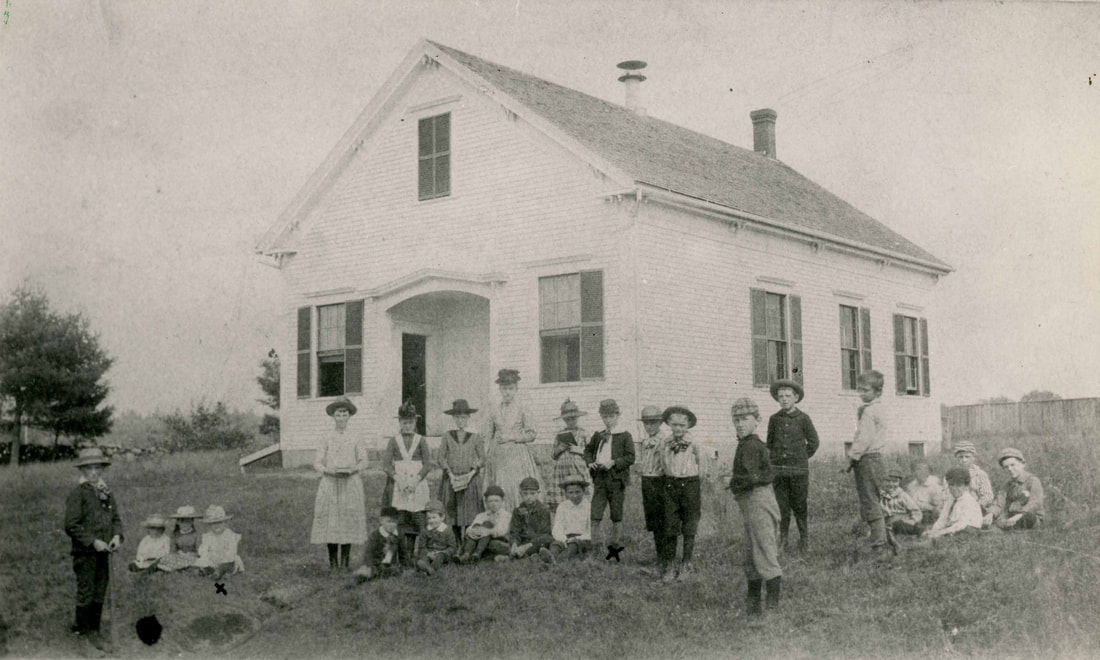
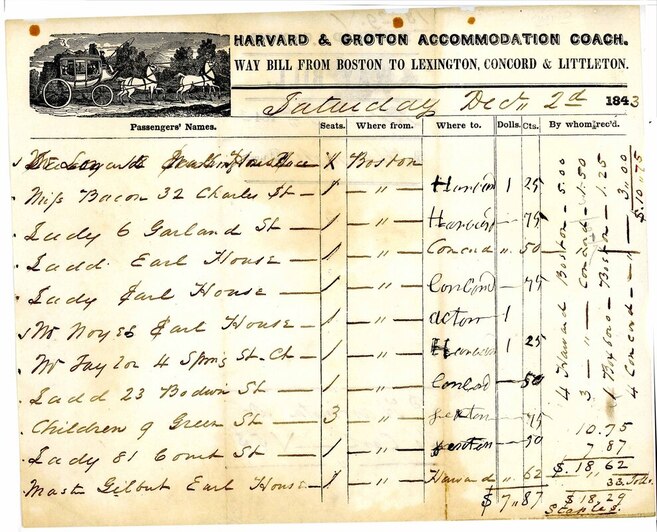
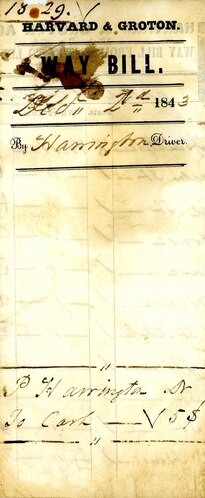
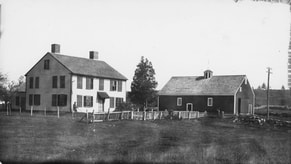
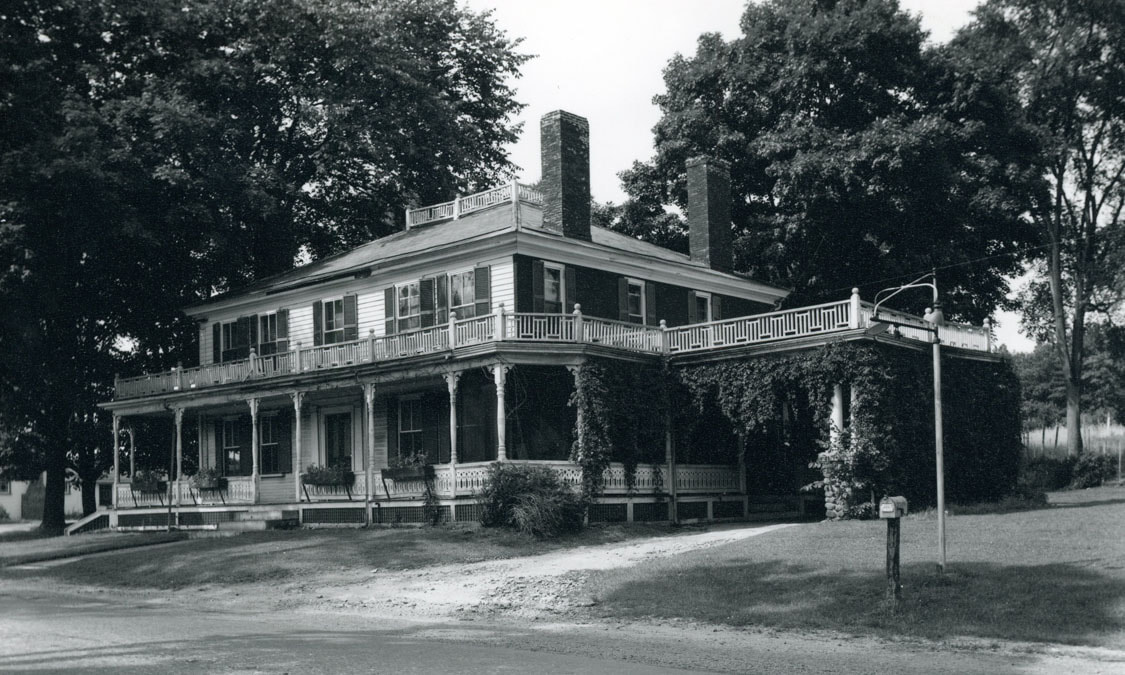
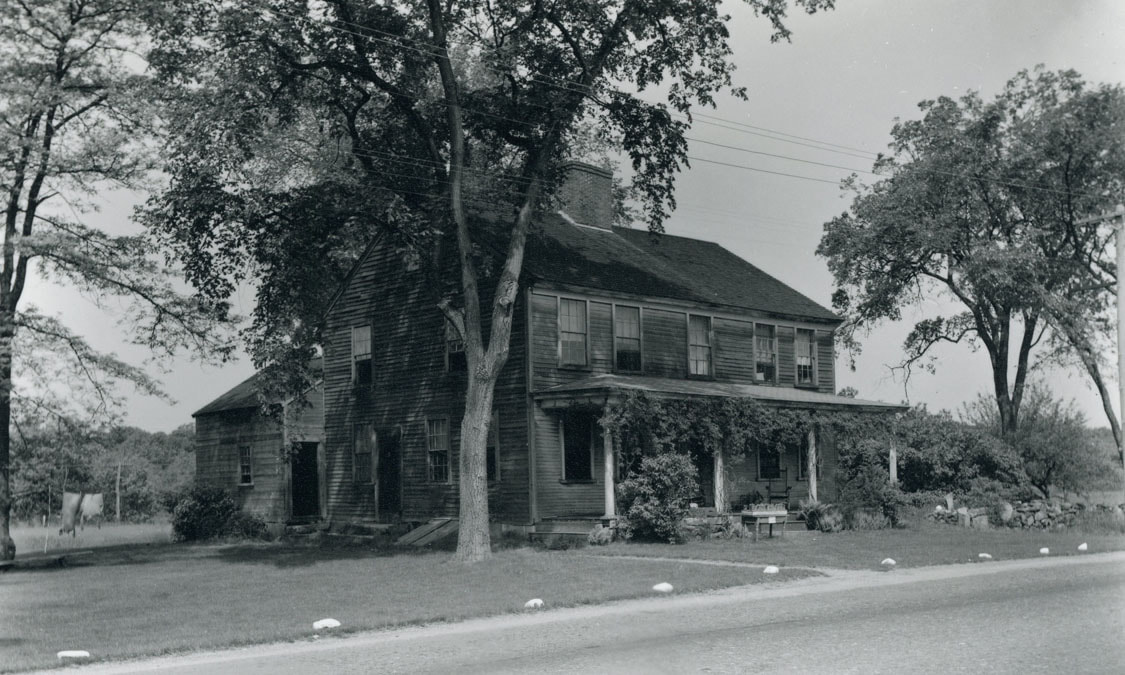
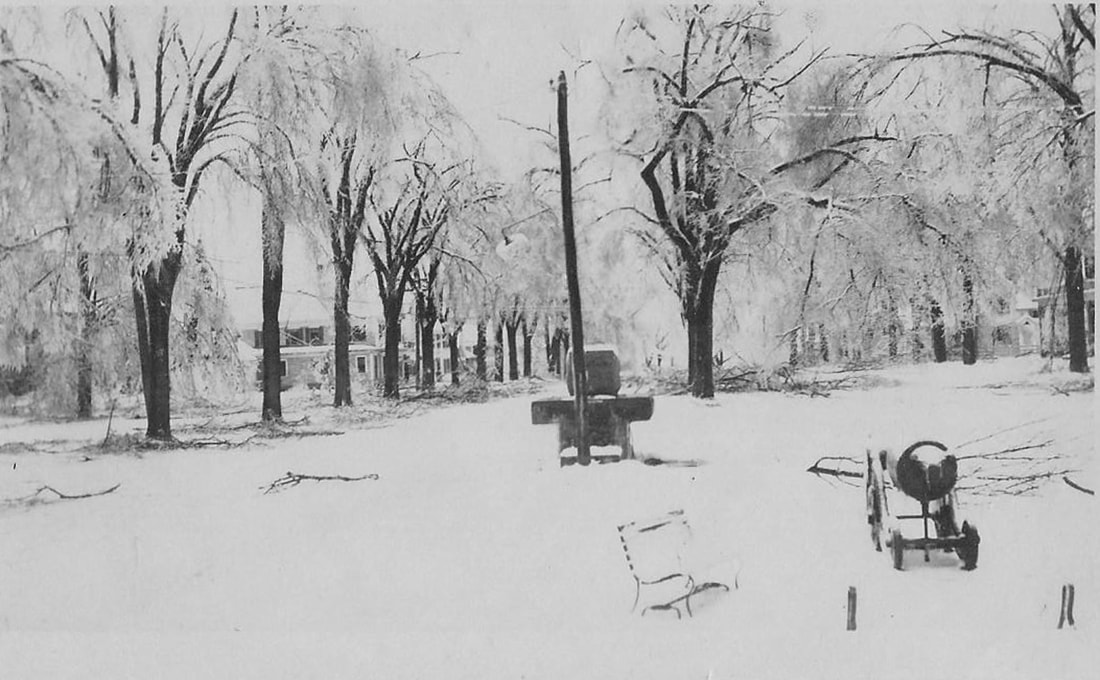
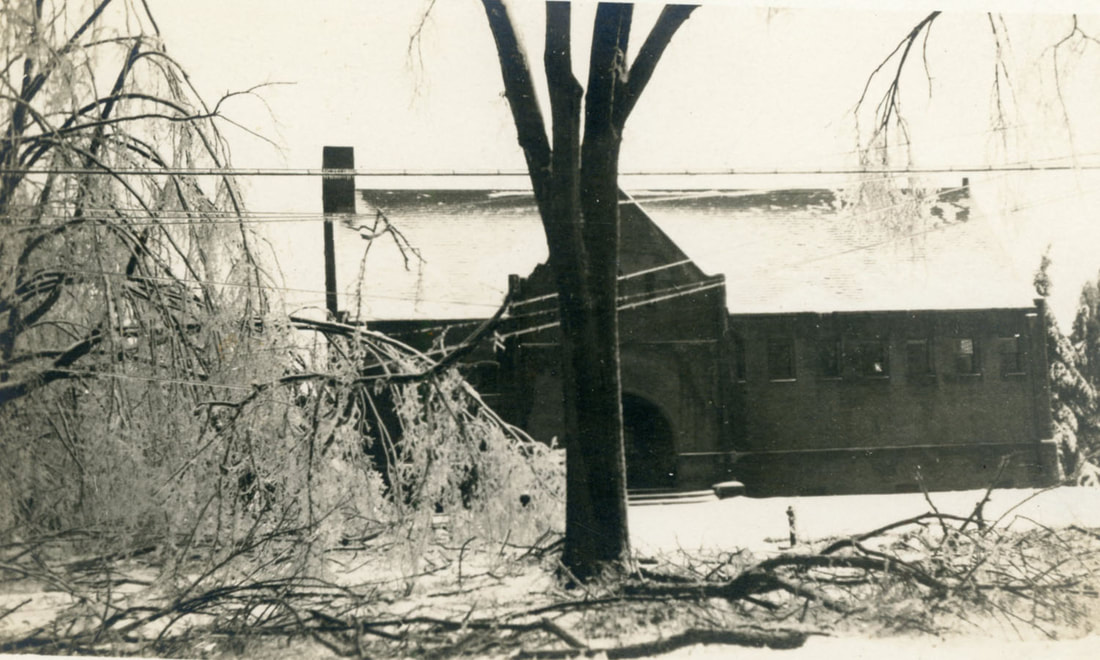

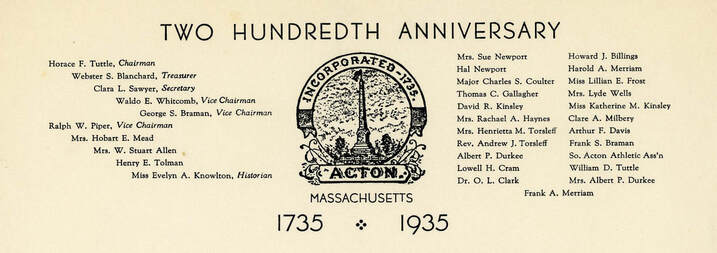
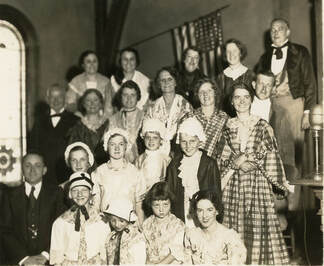
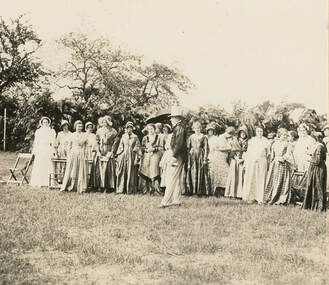
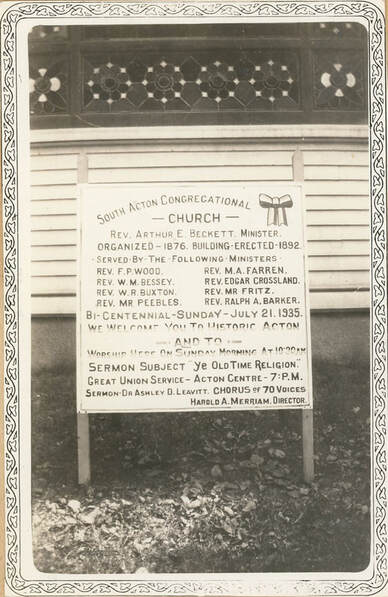

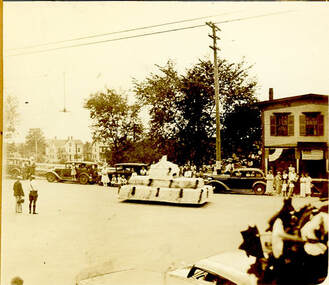
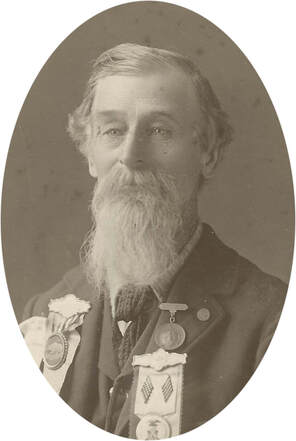
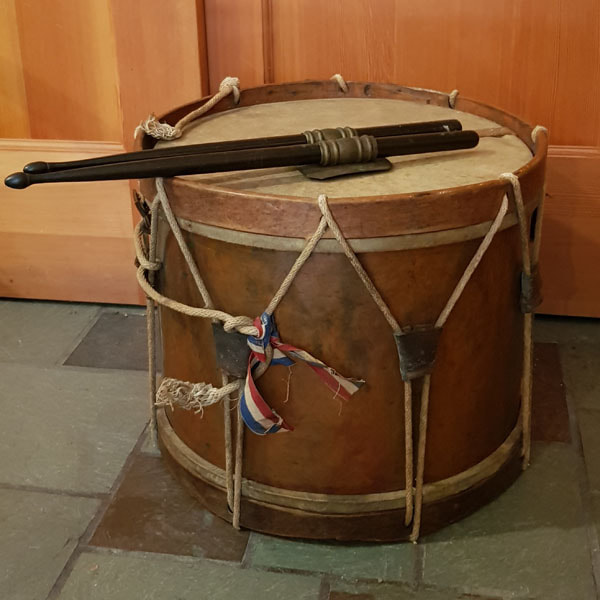
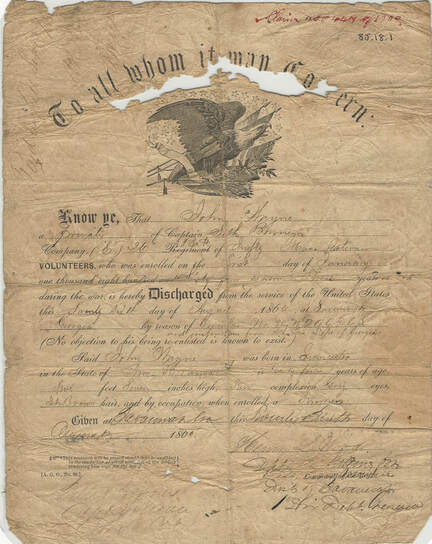
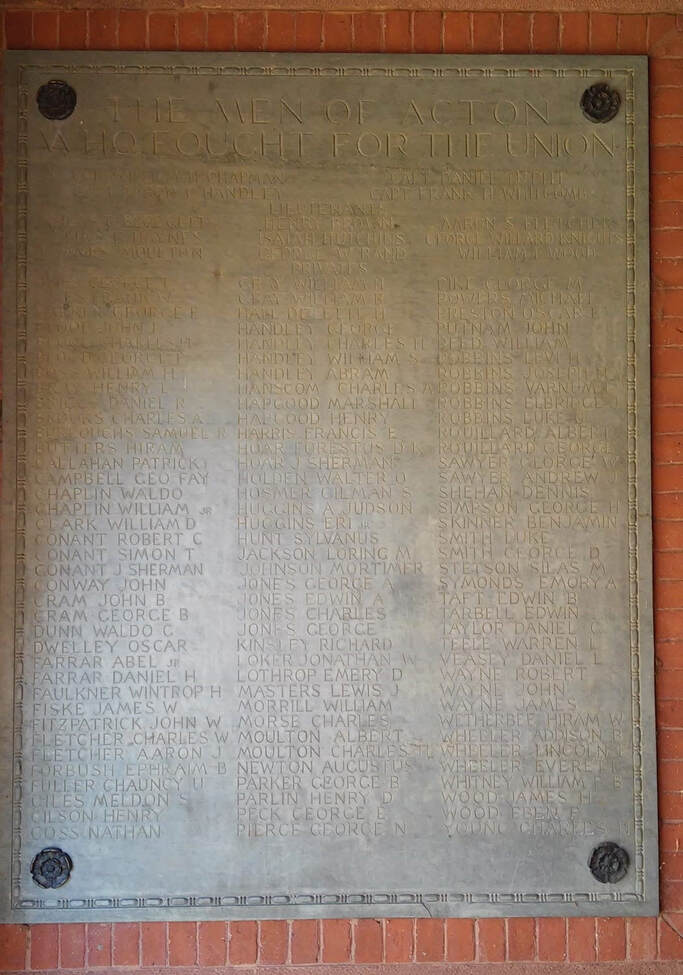
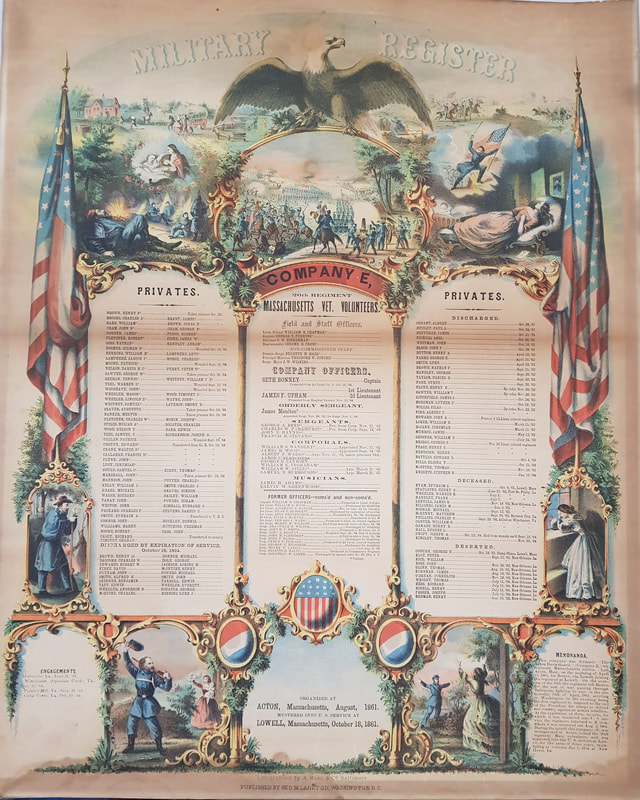
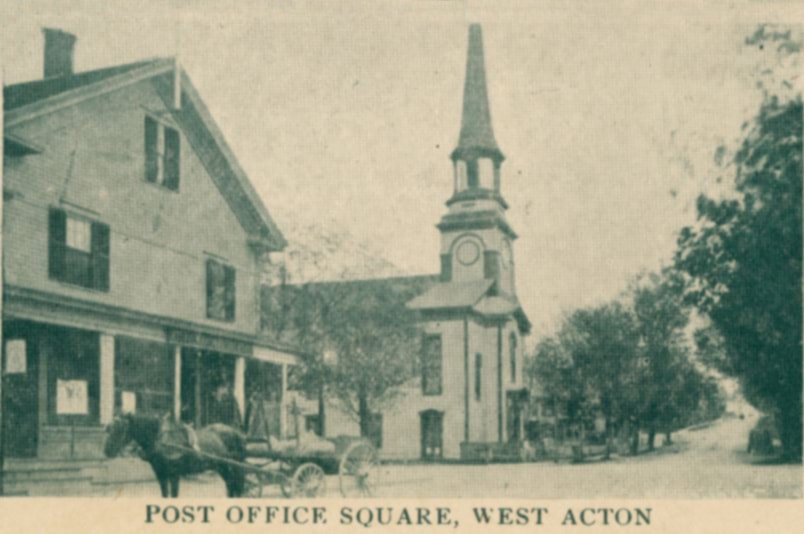
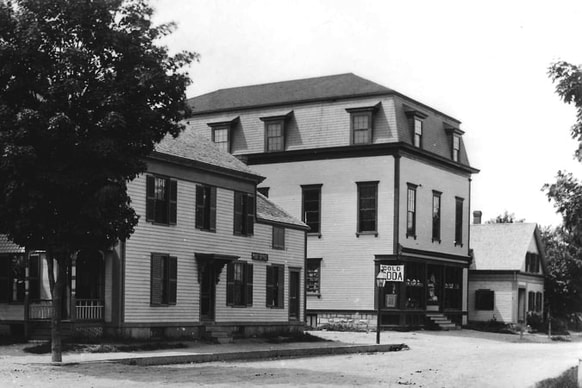
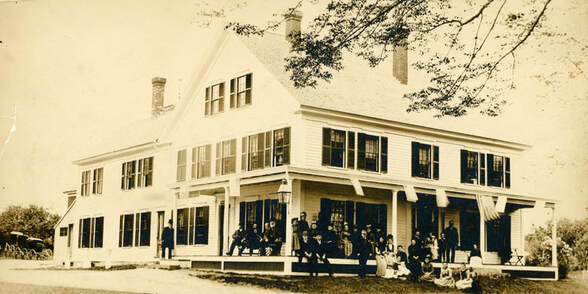
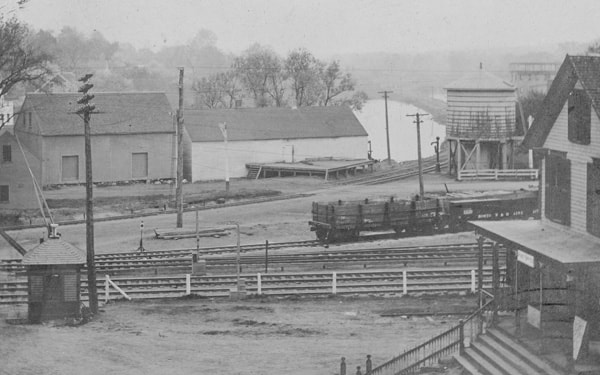
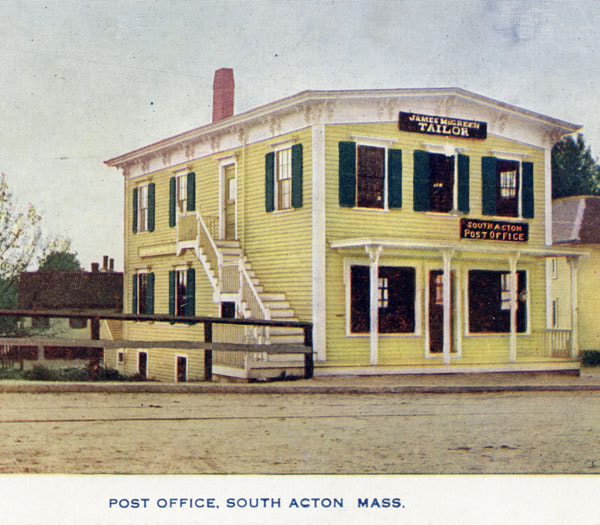

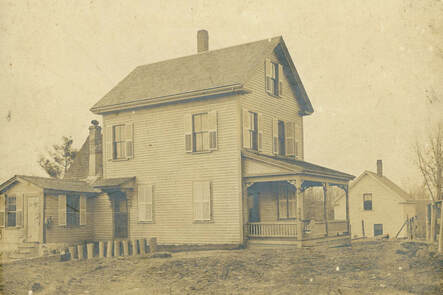
 RSS Feed
RSS Feed